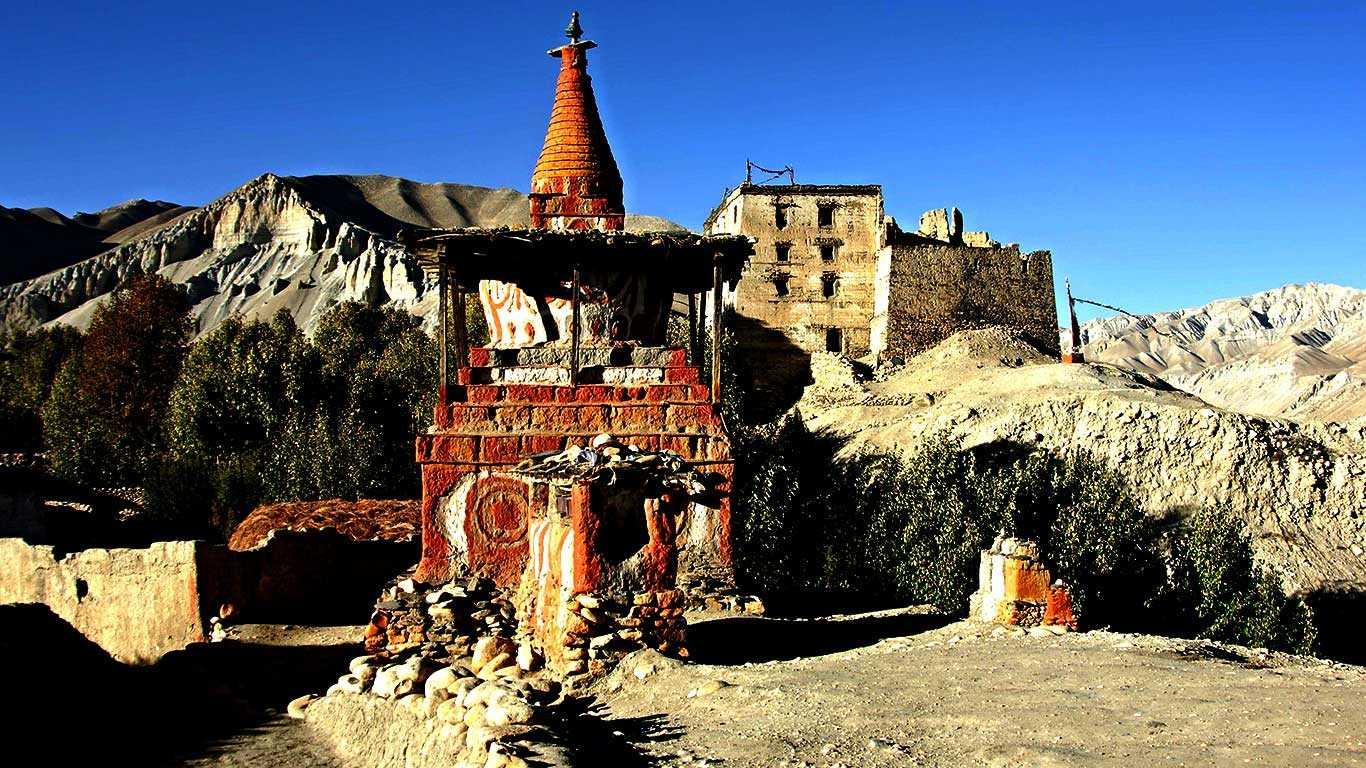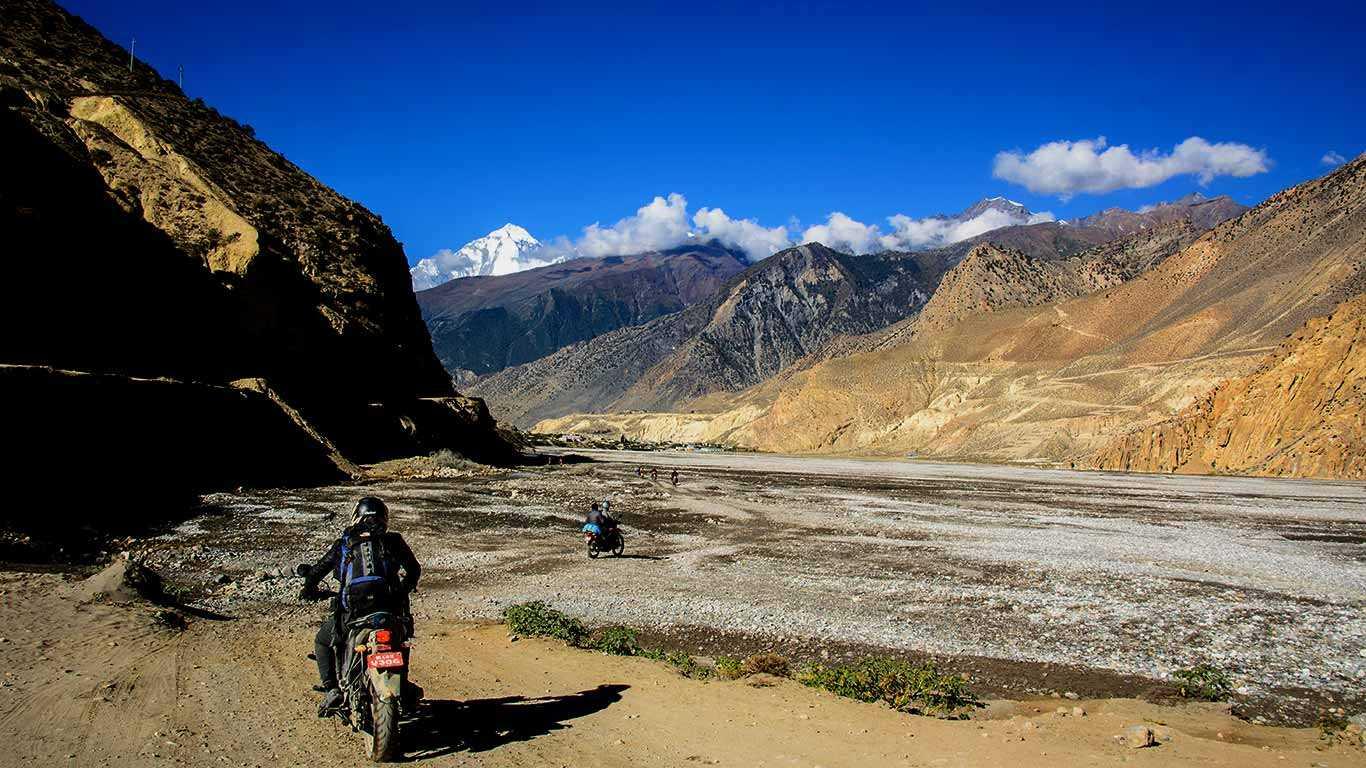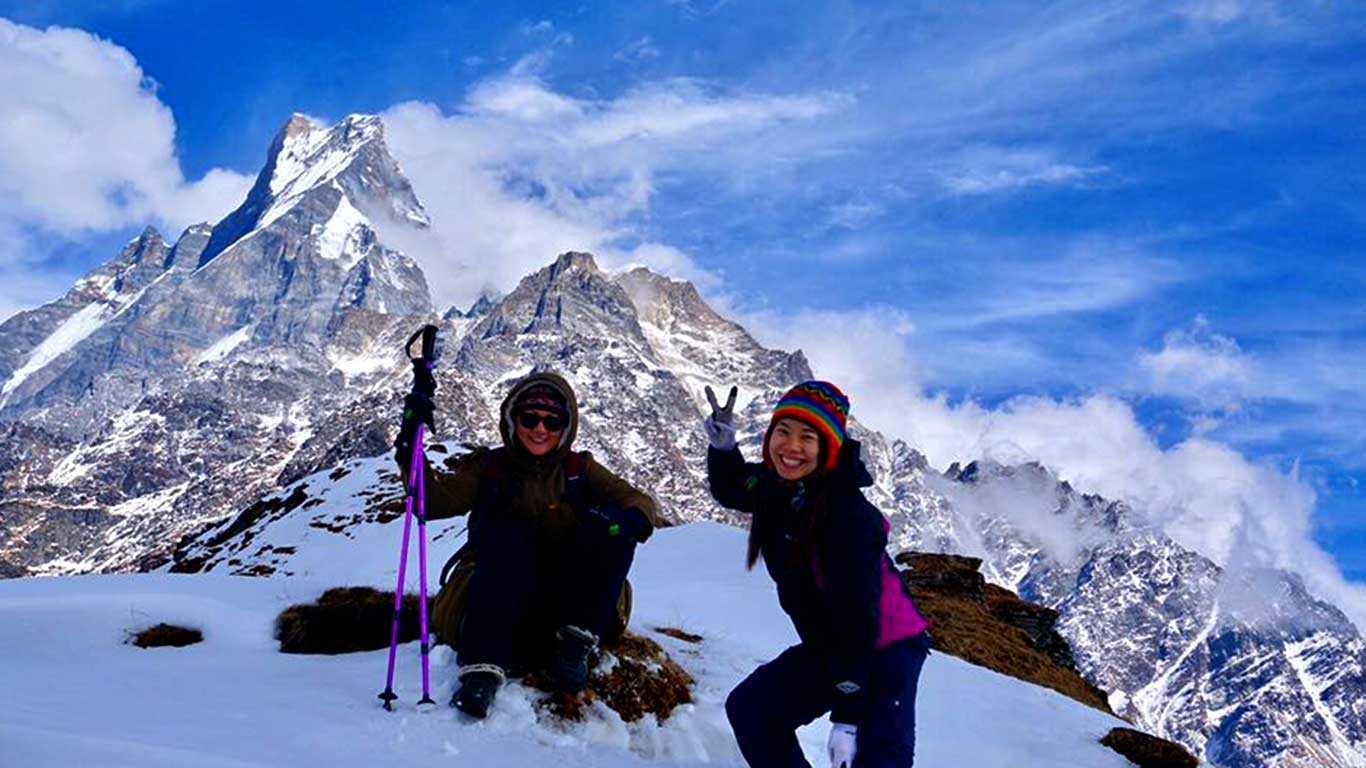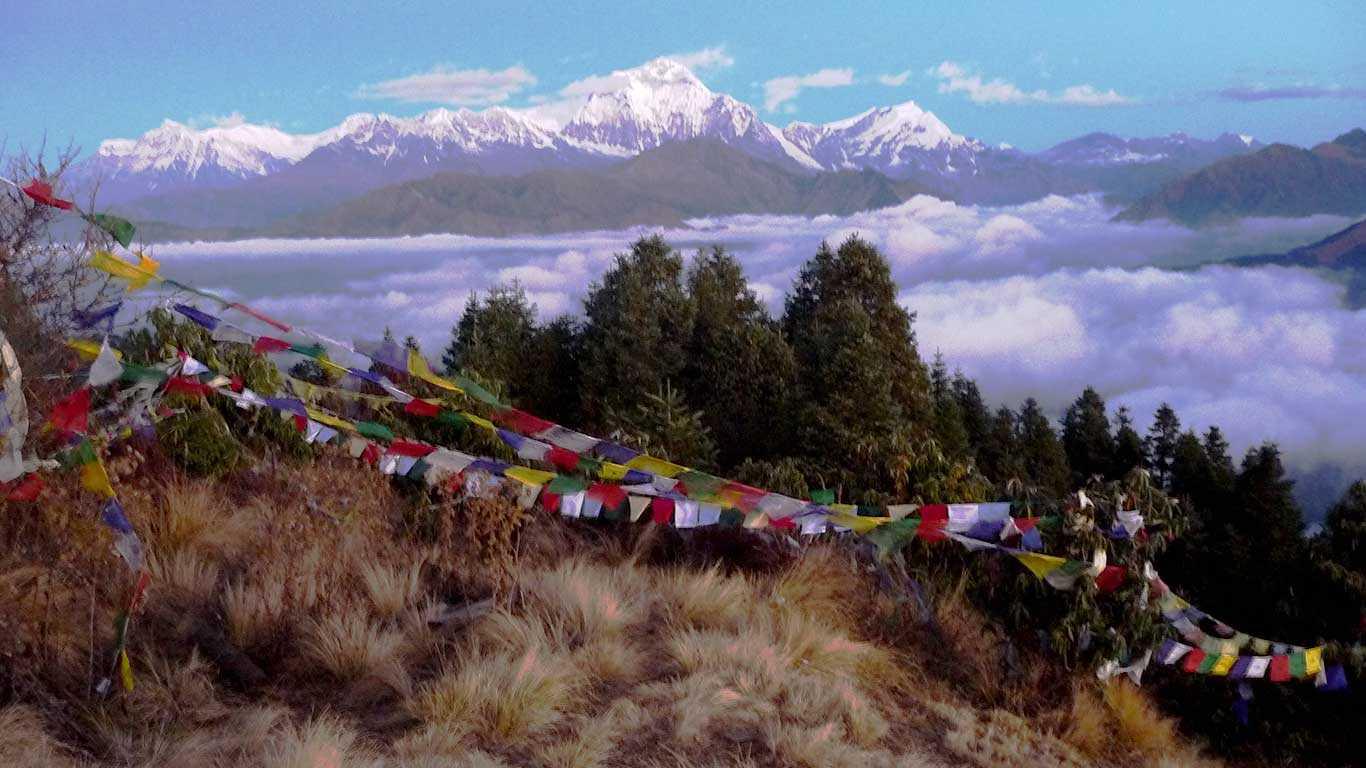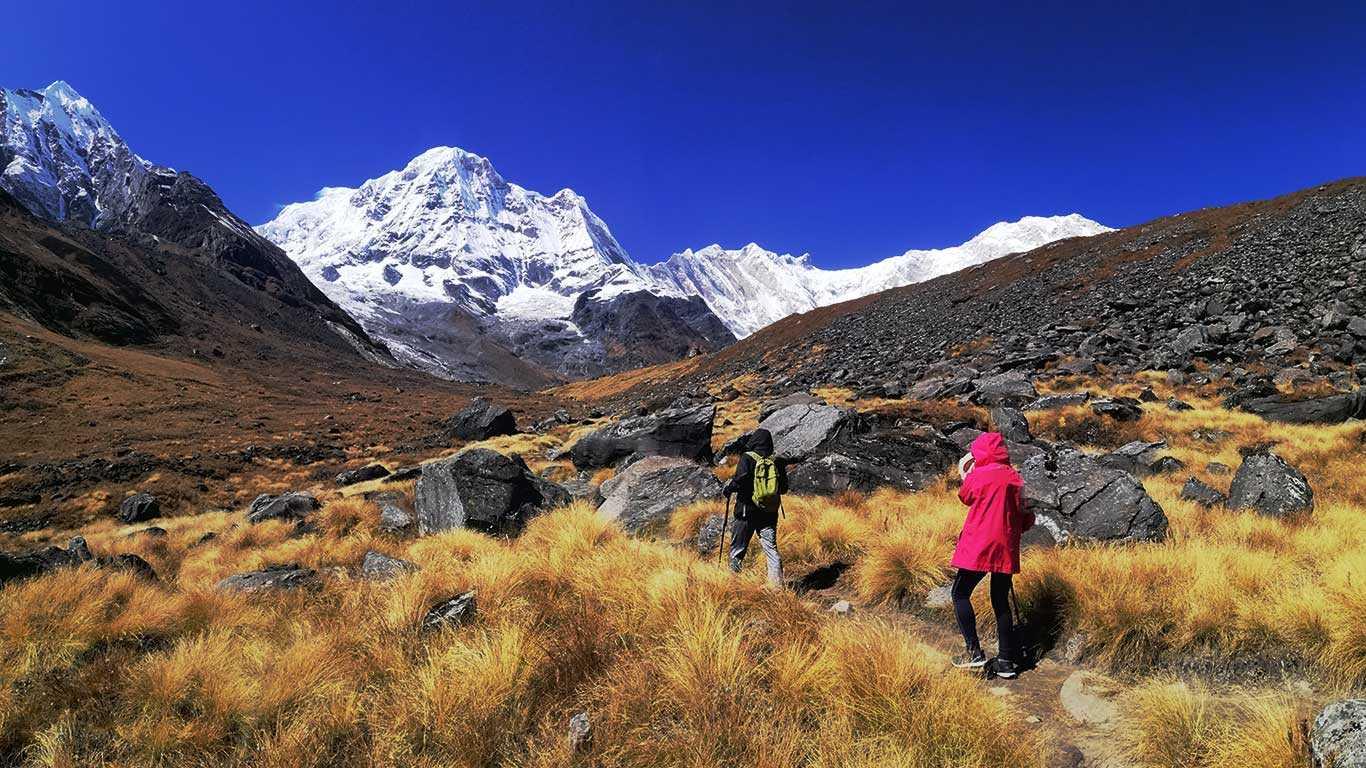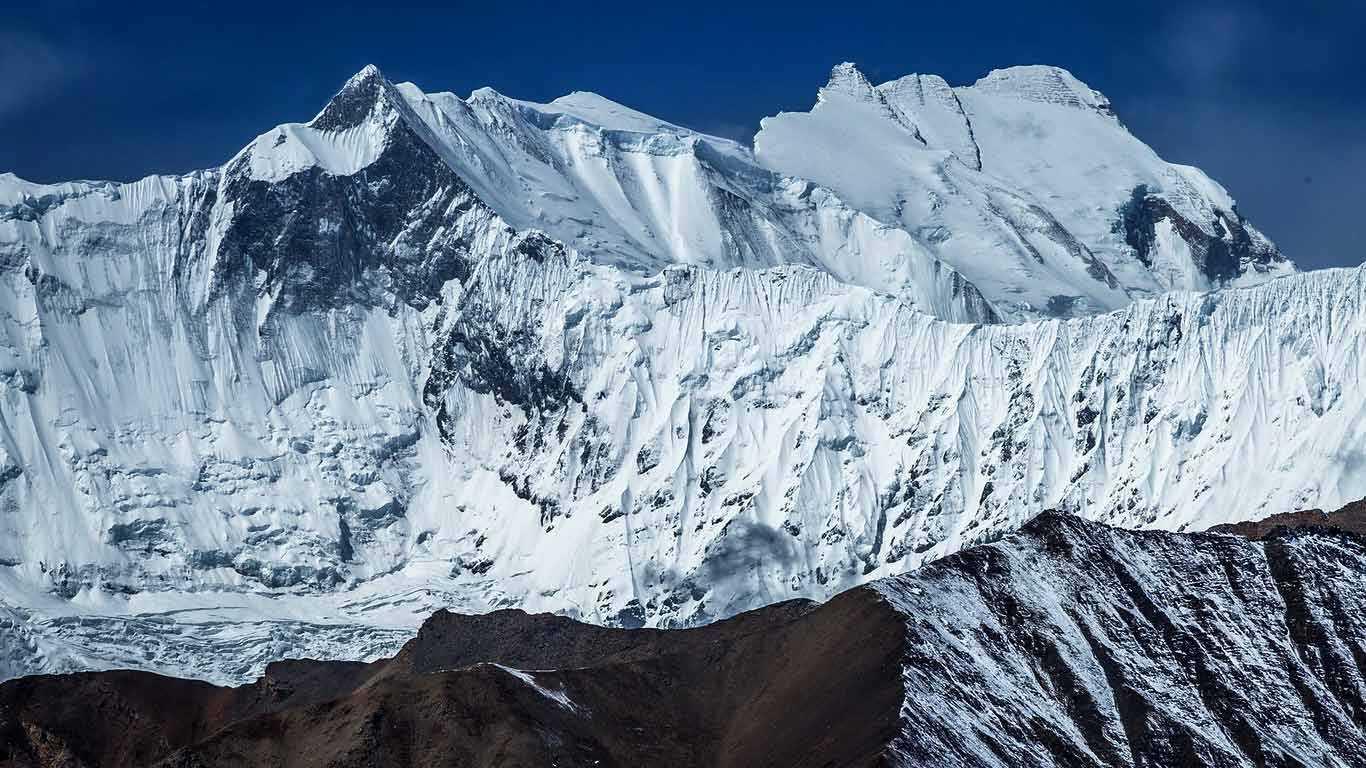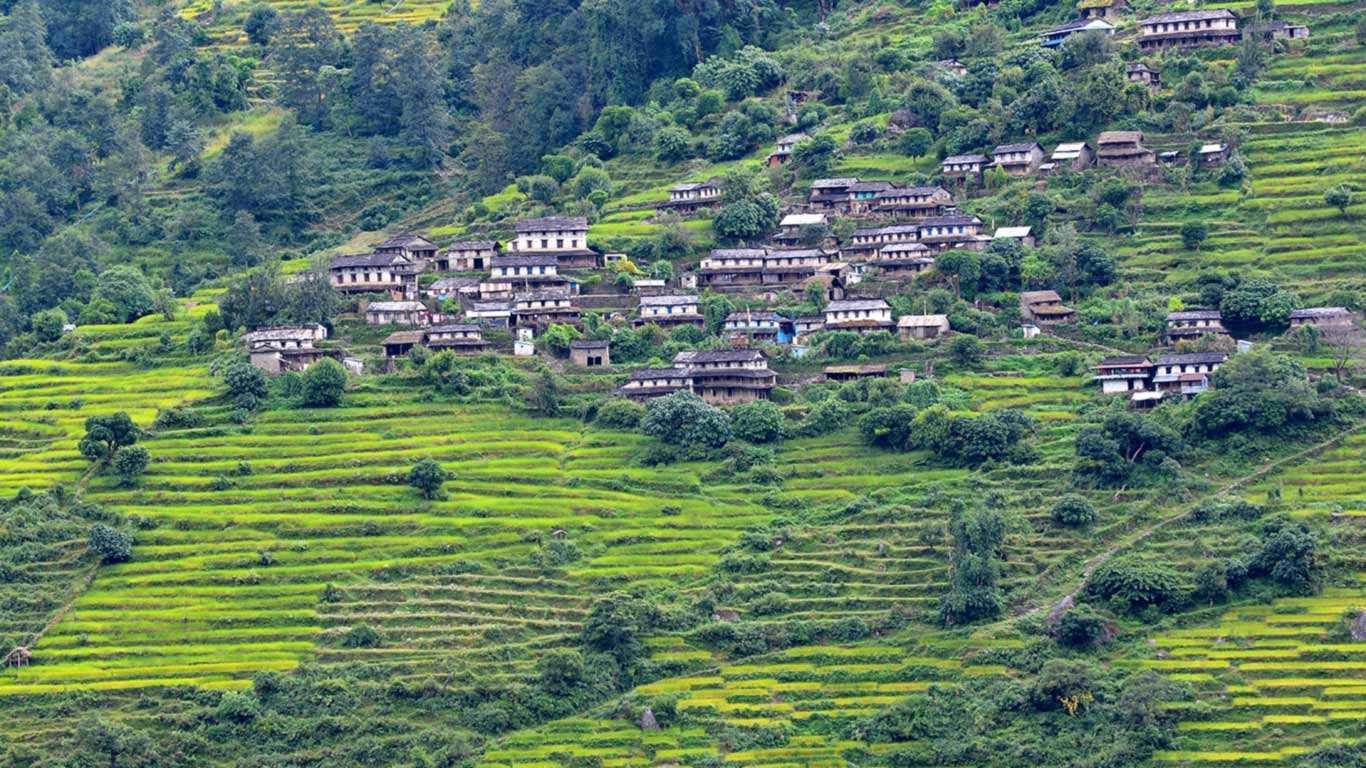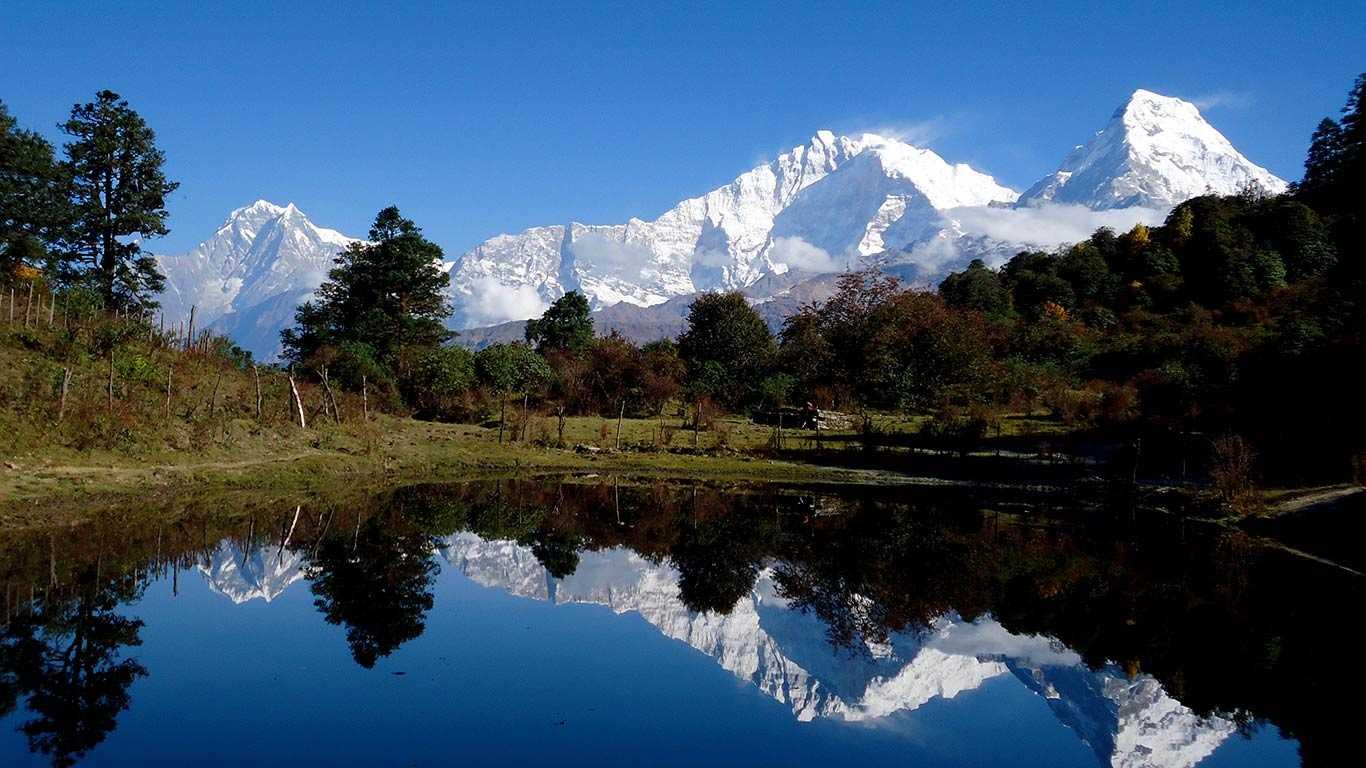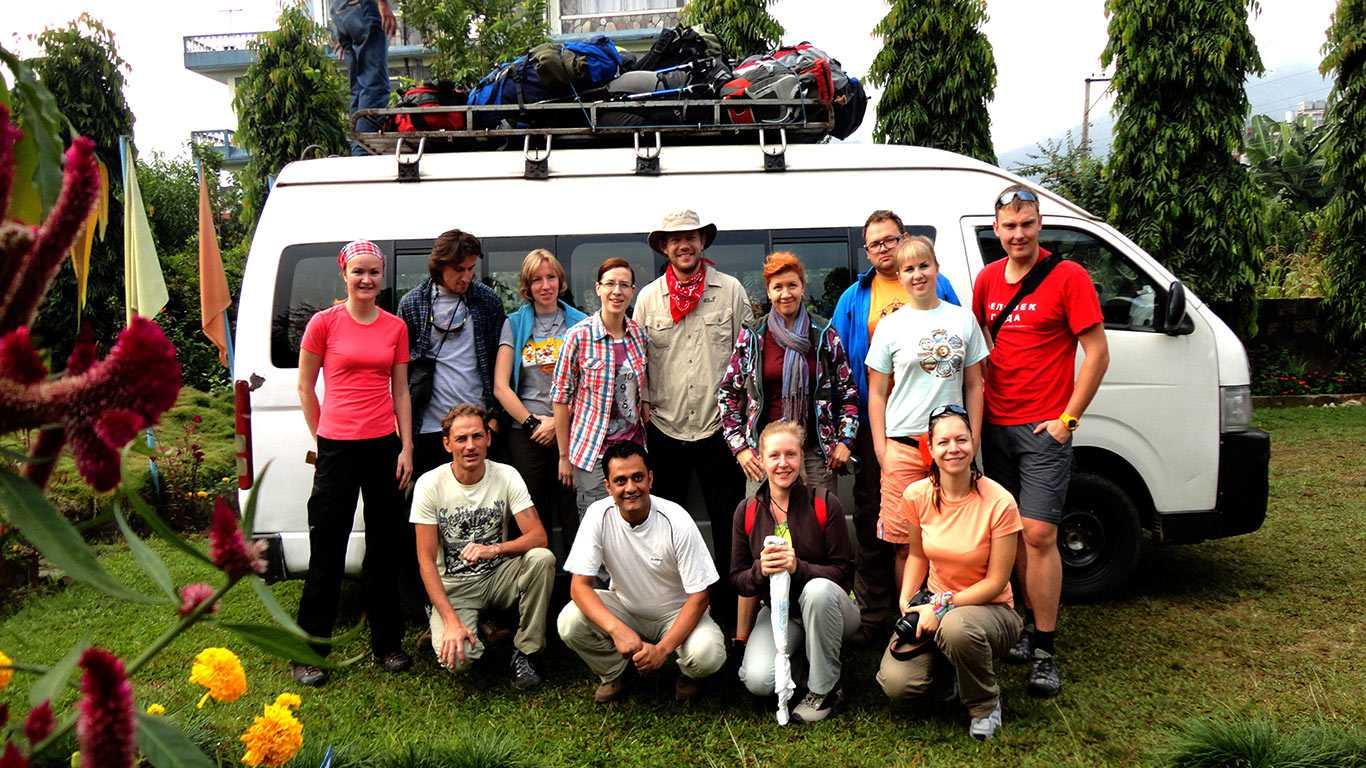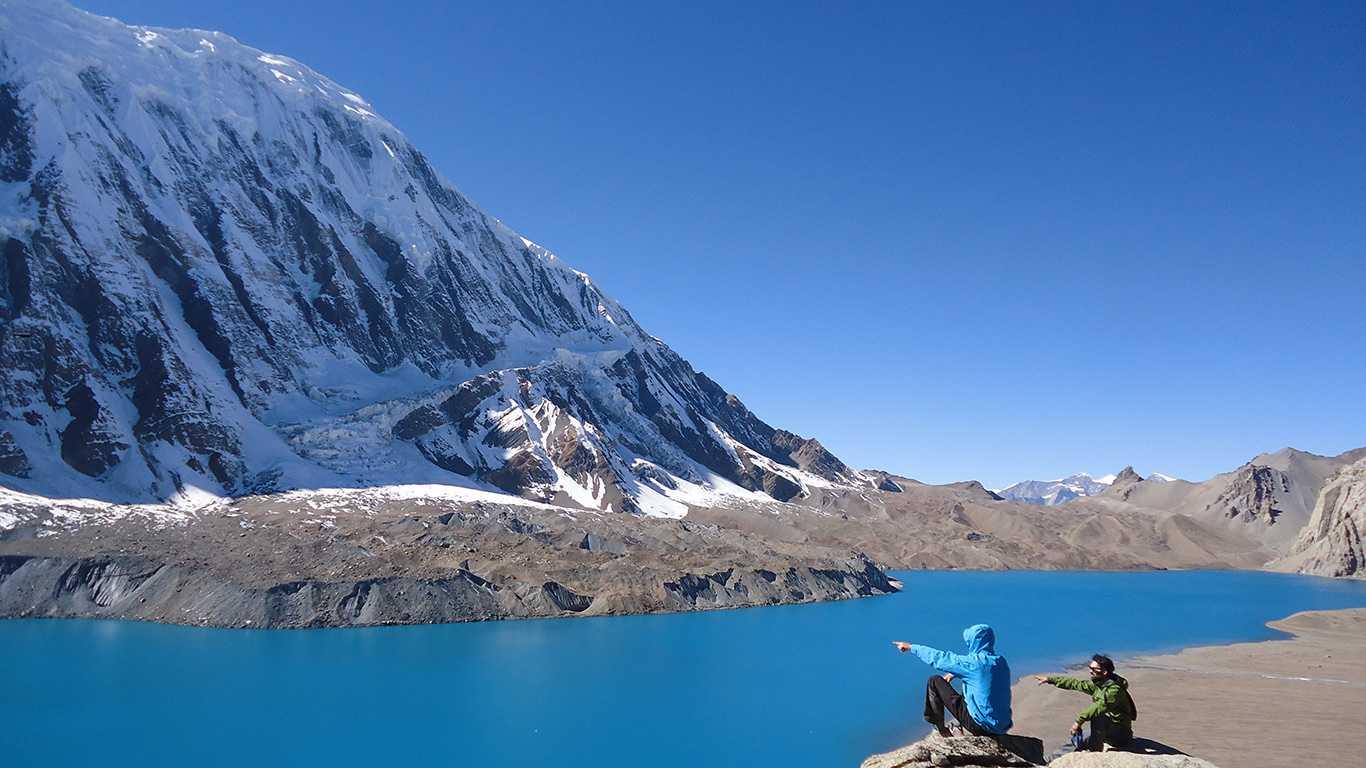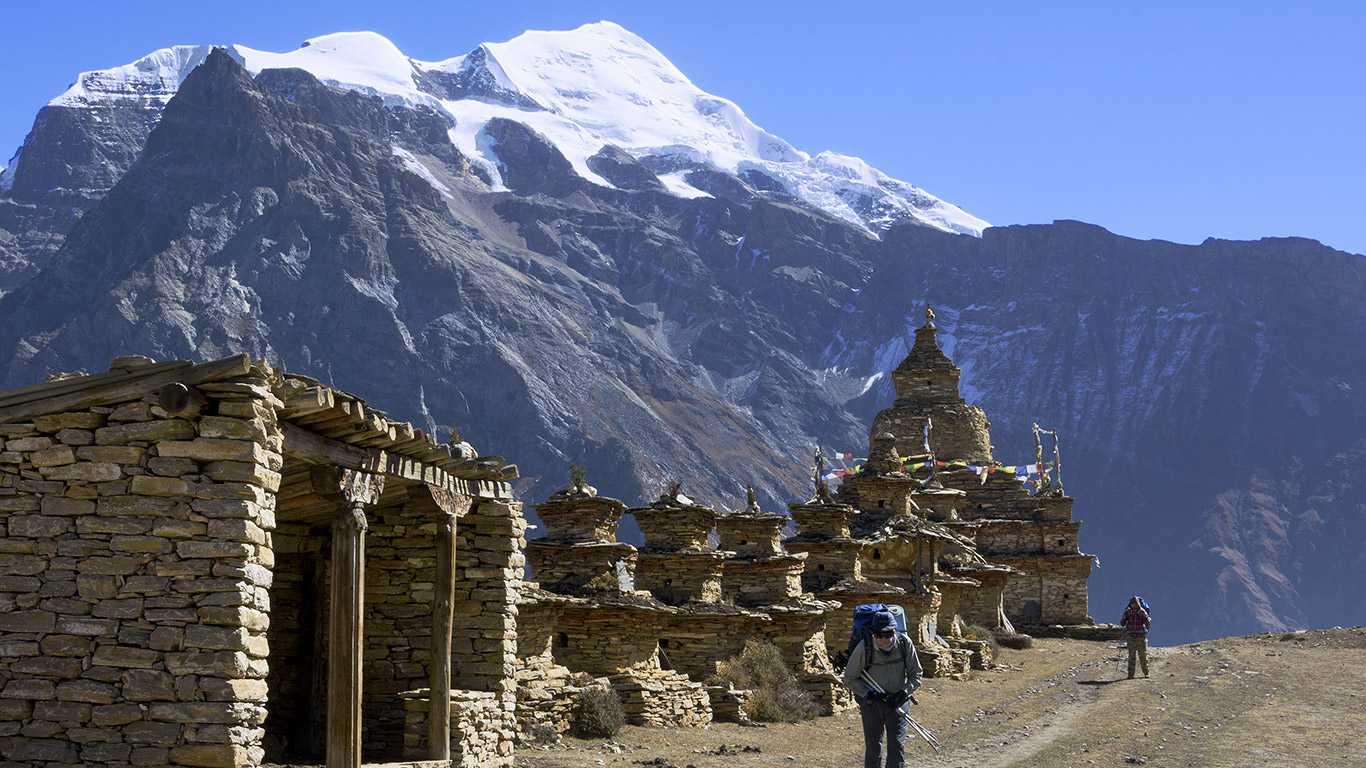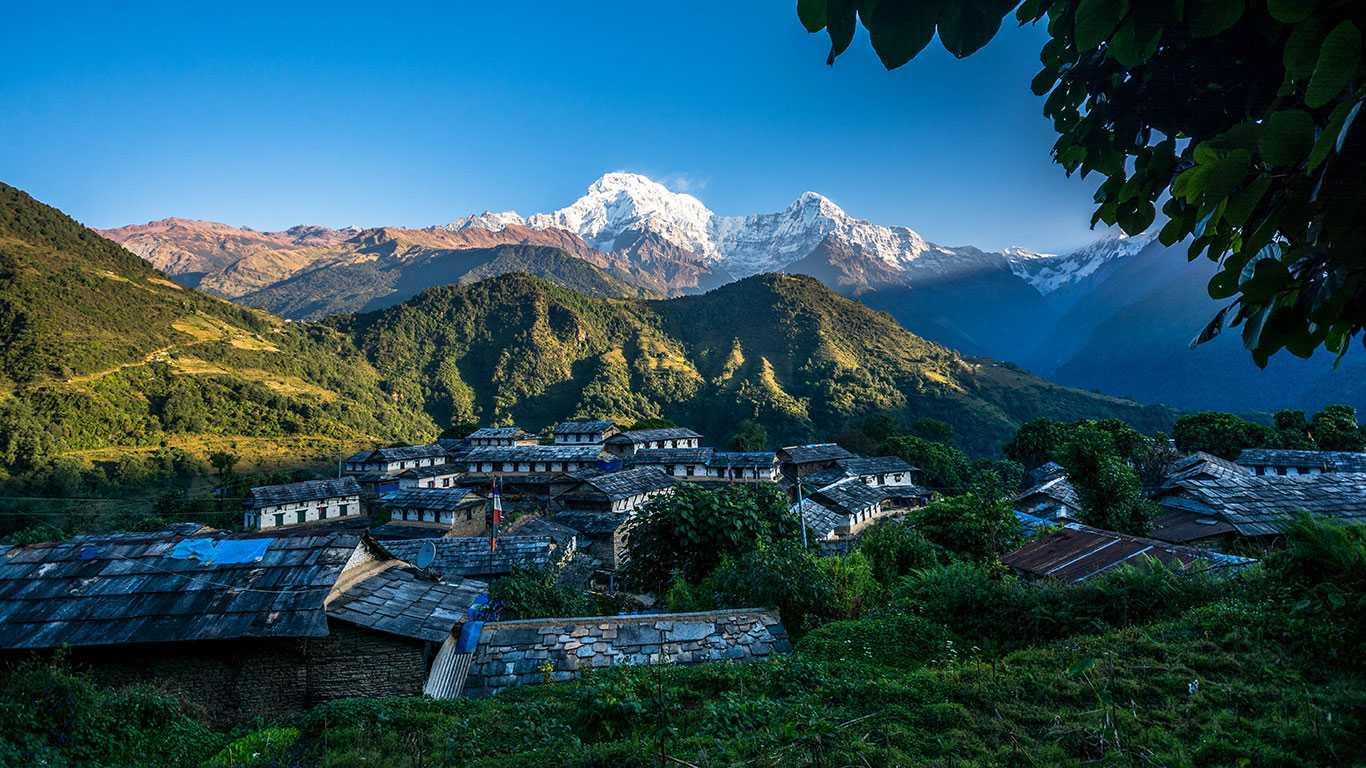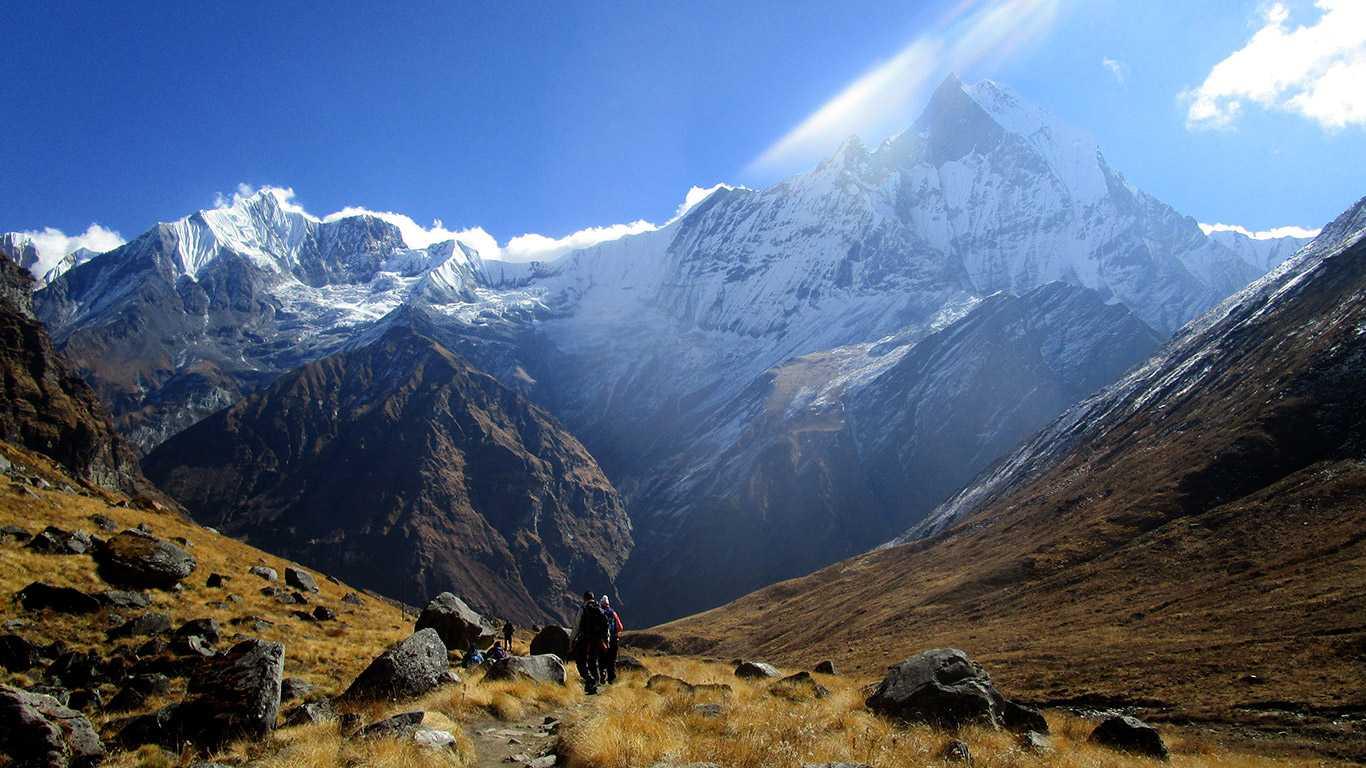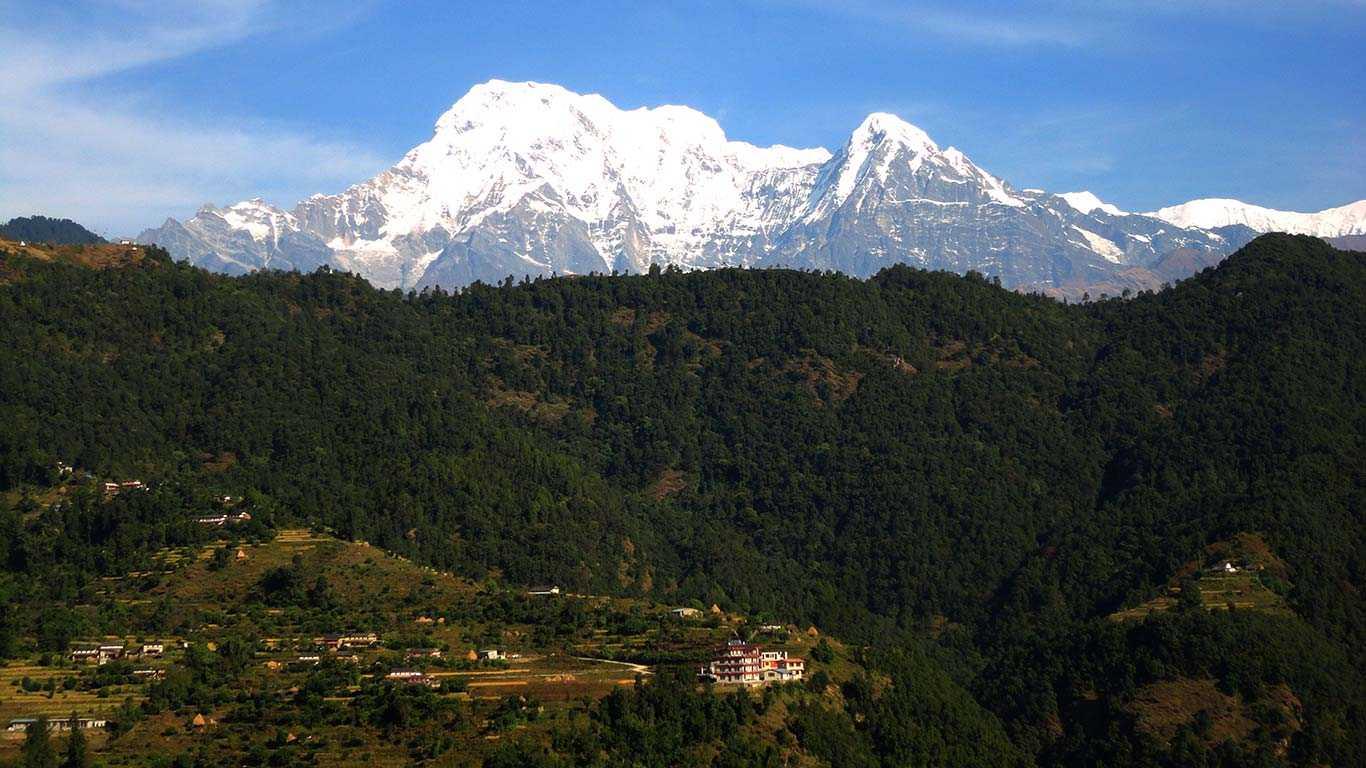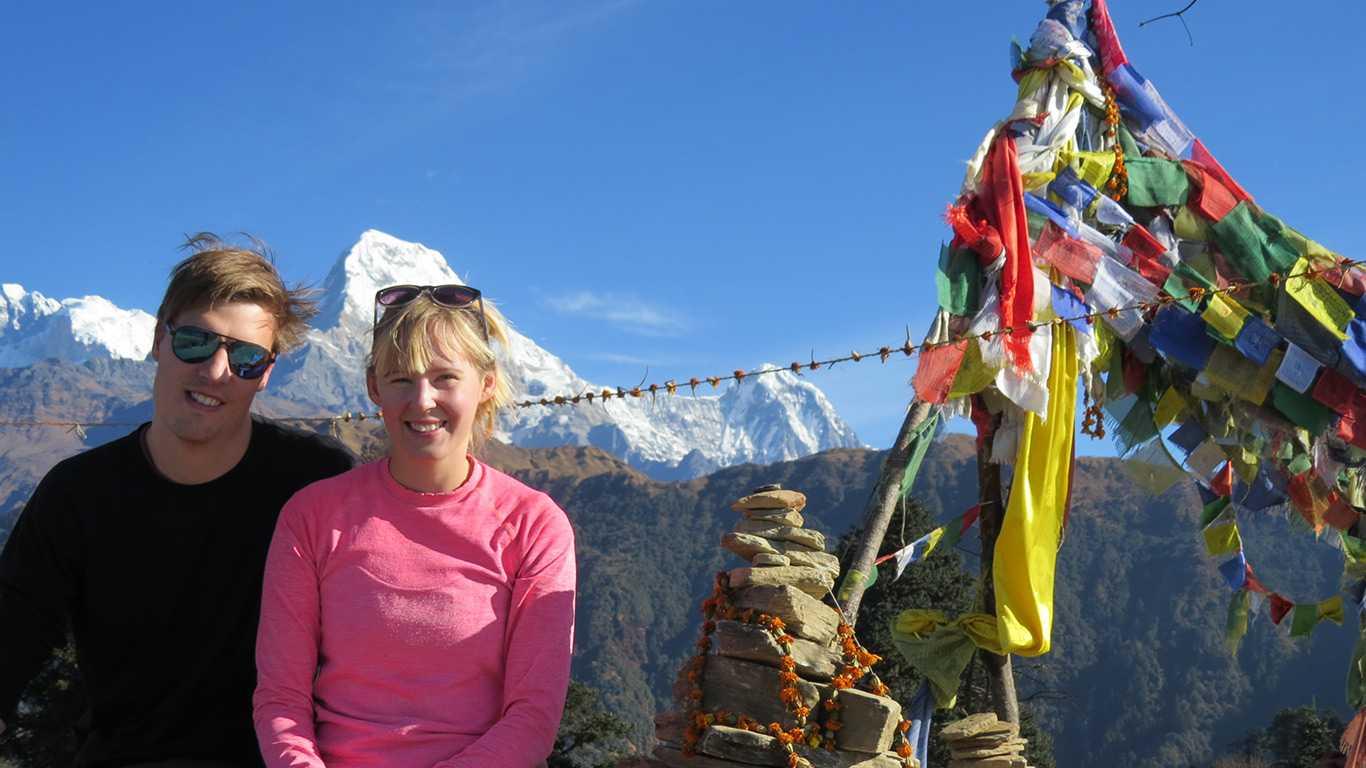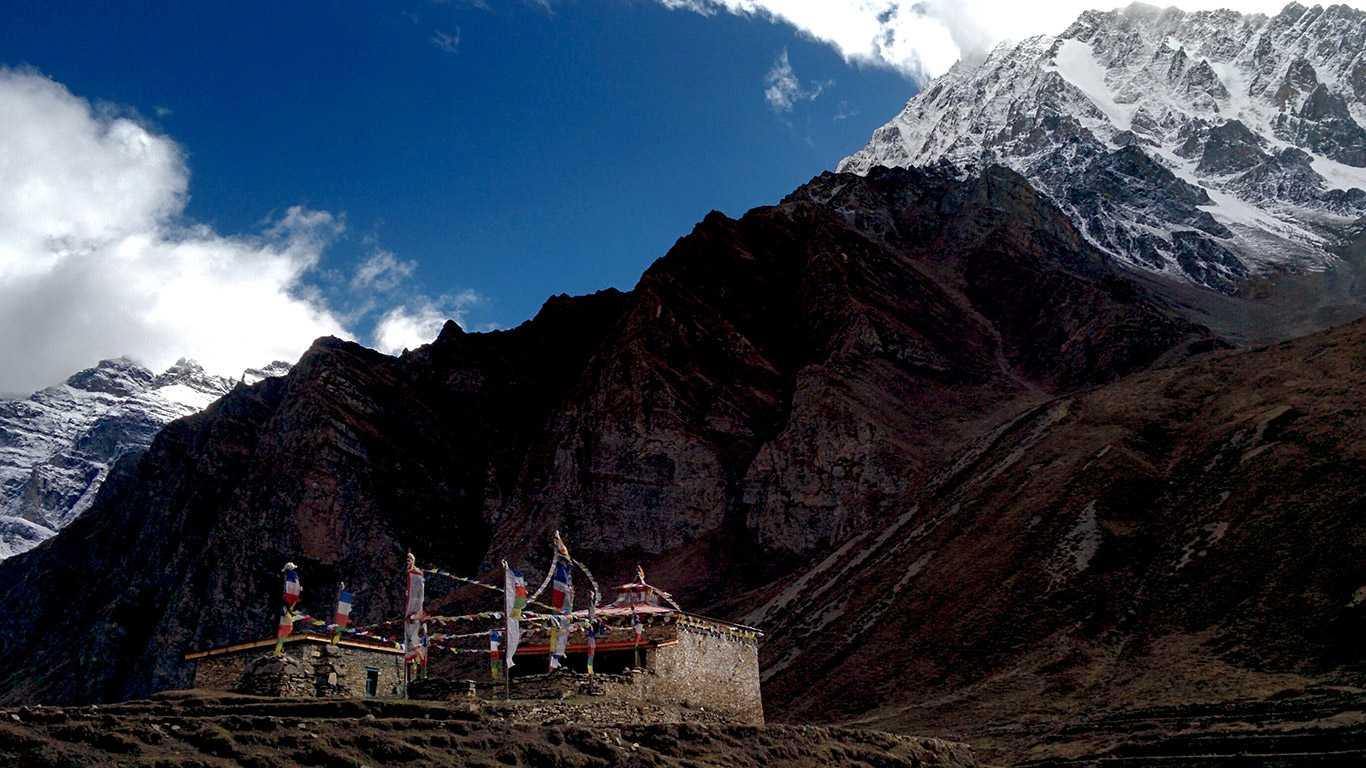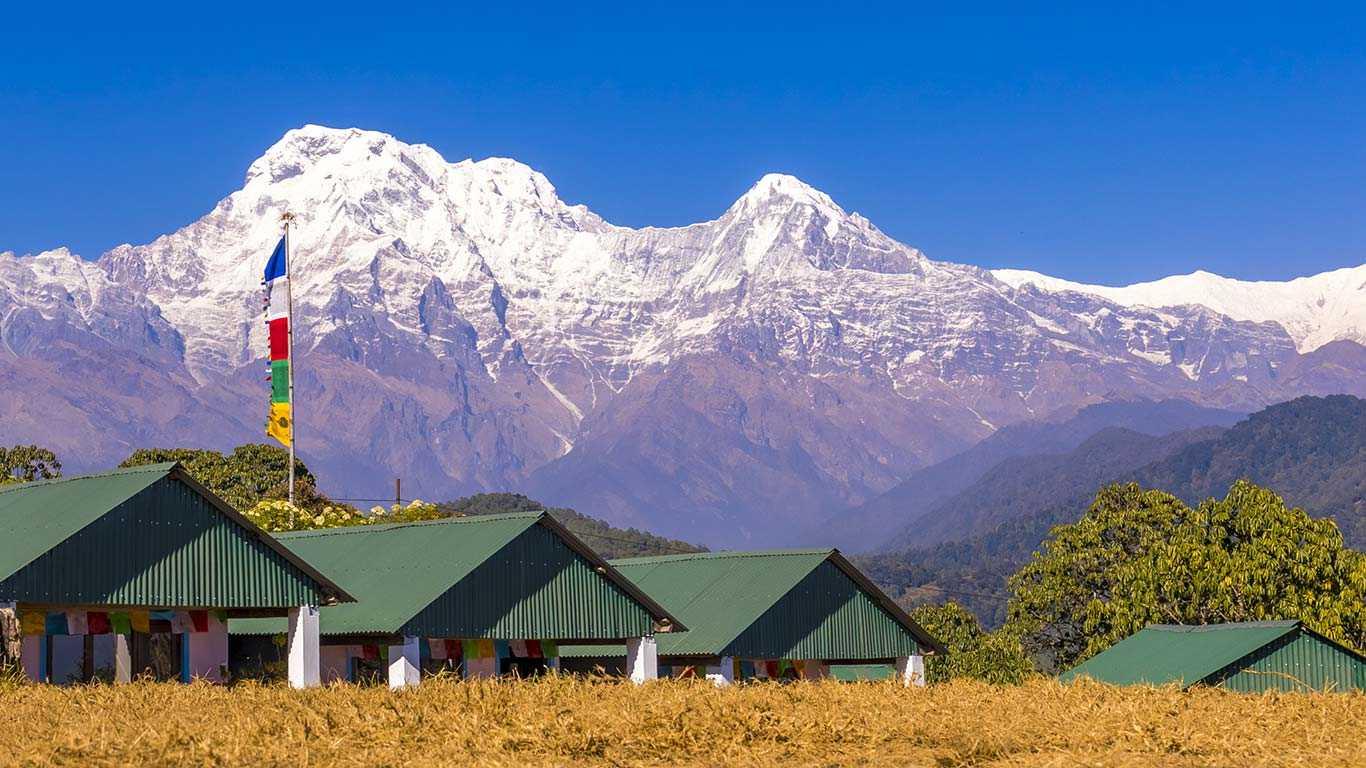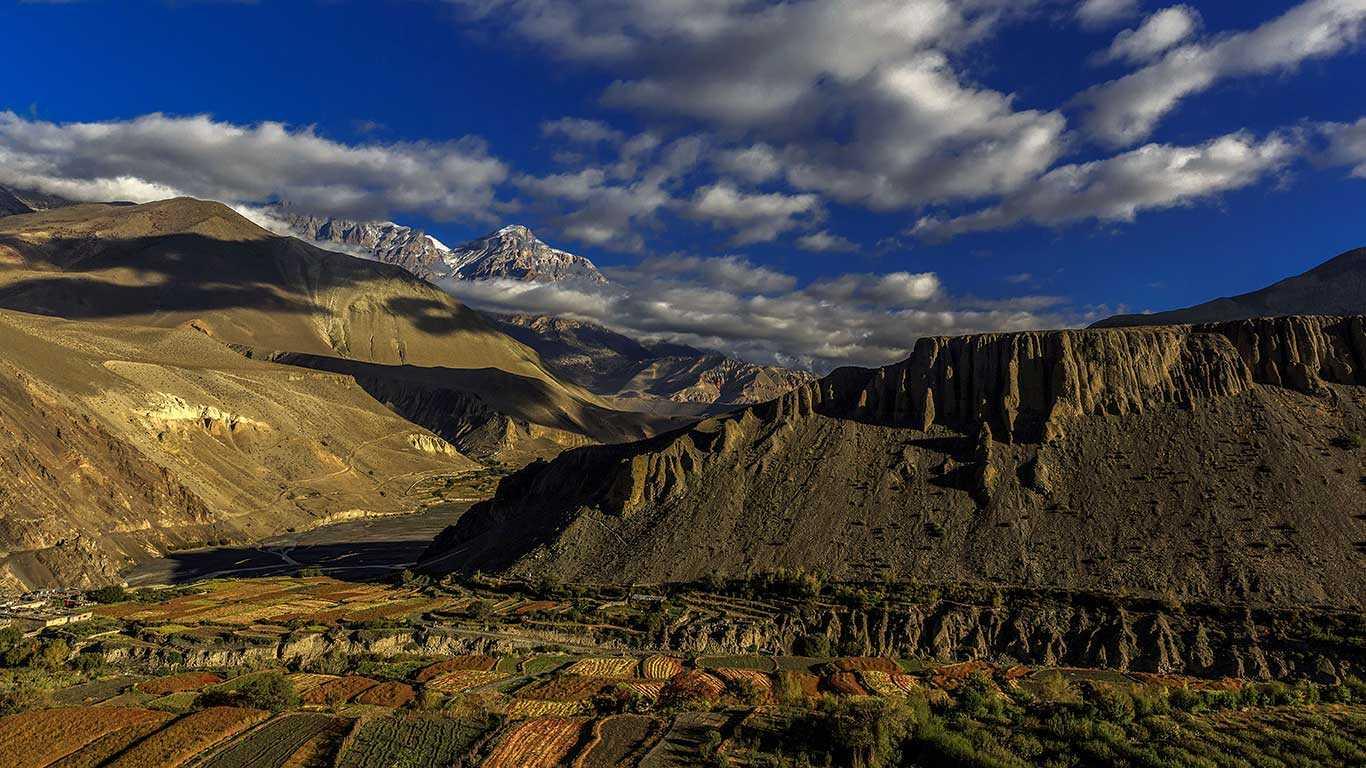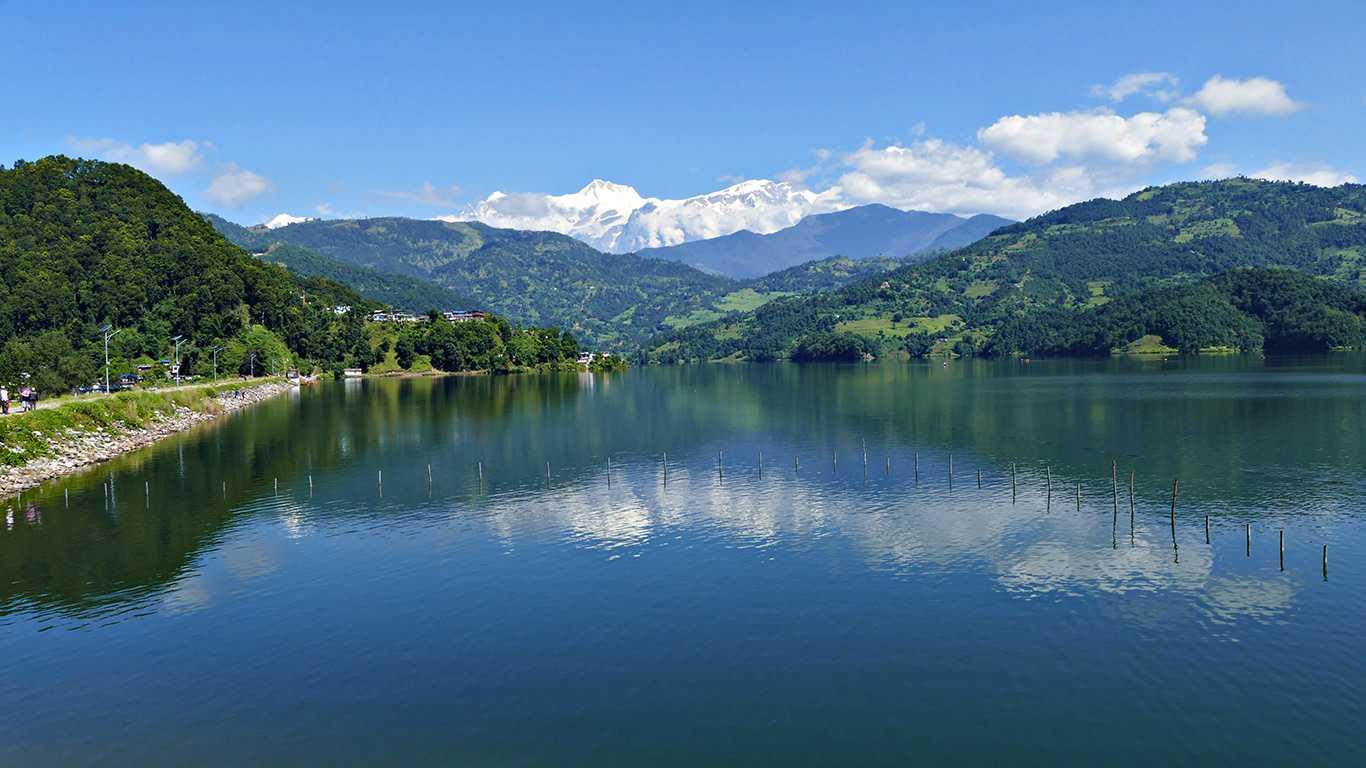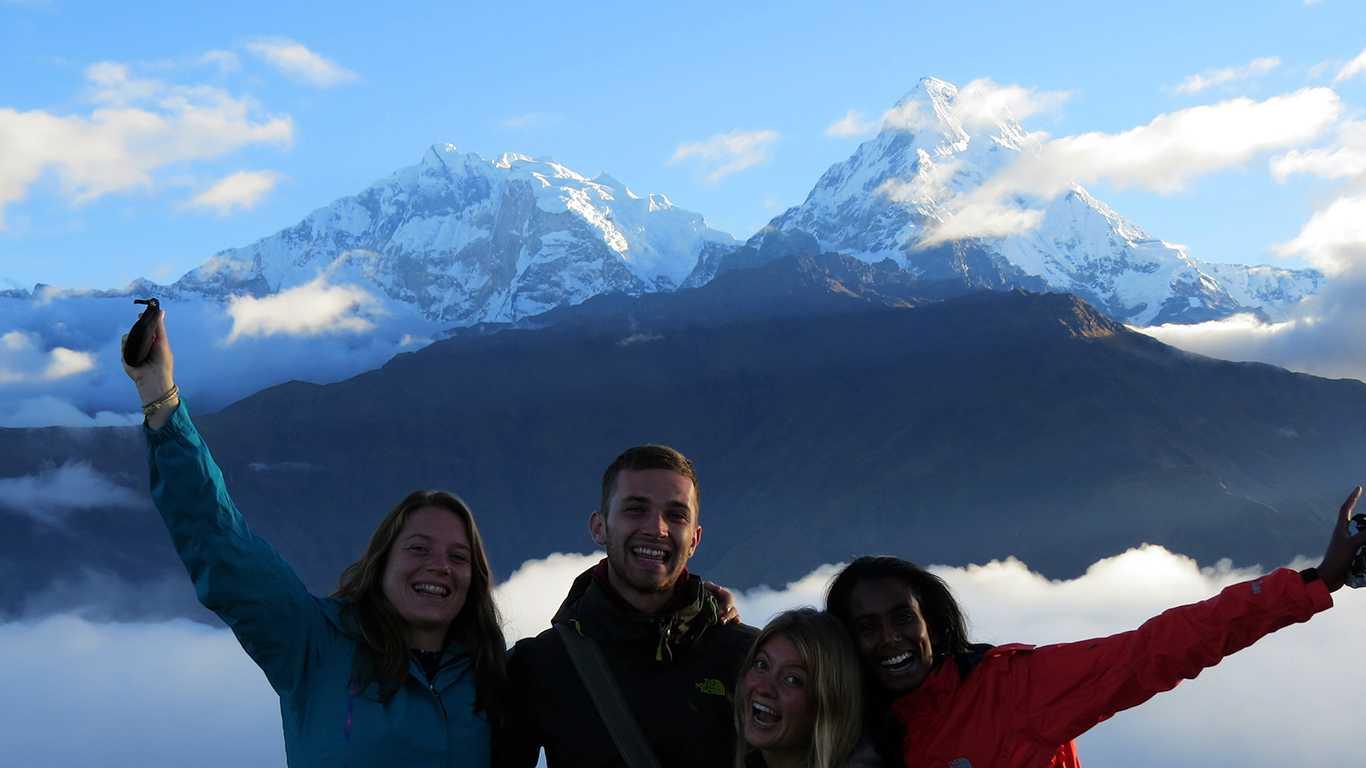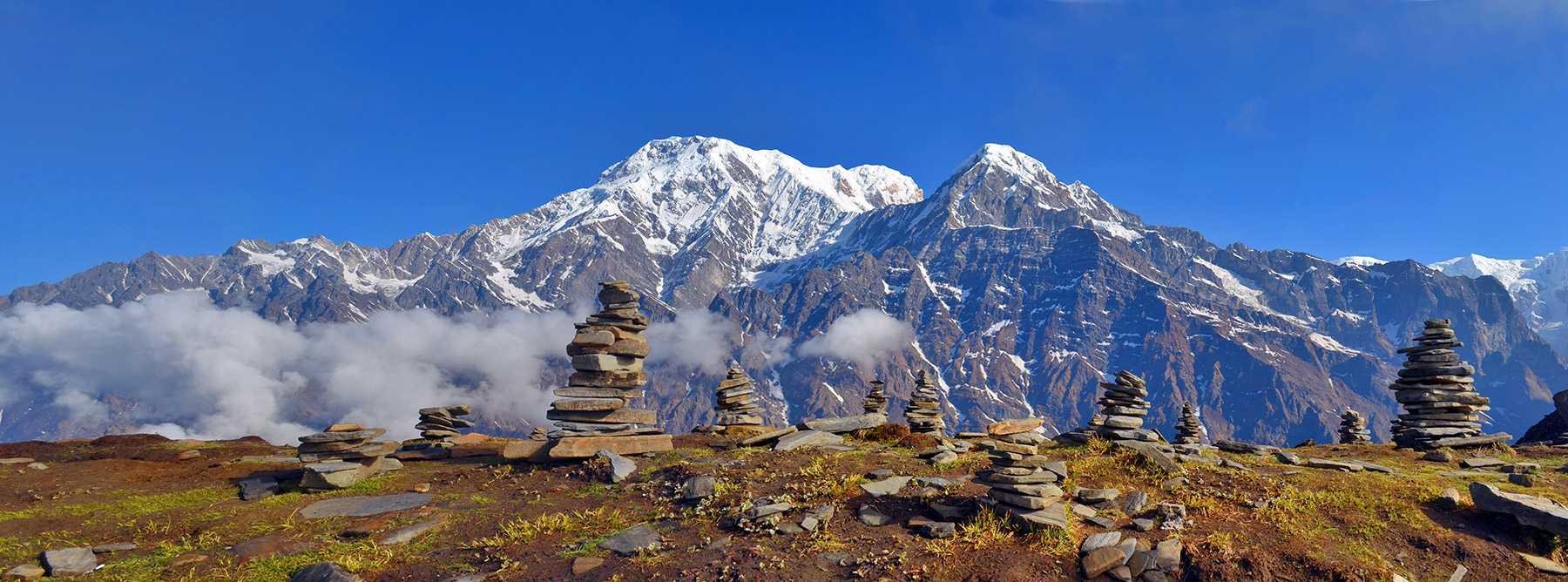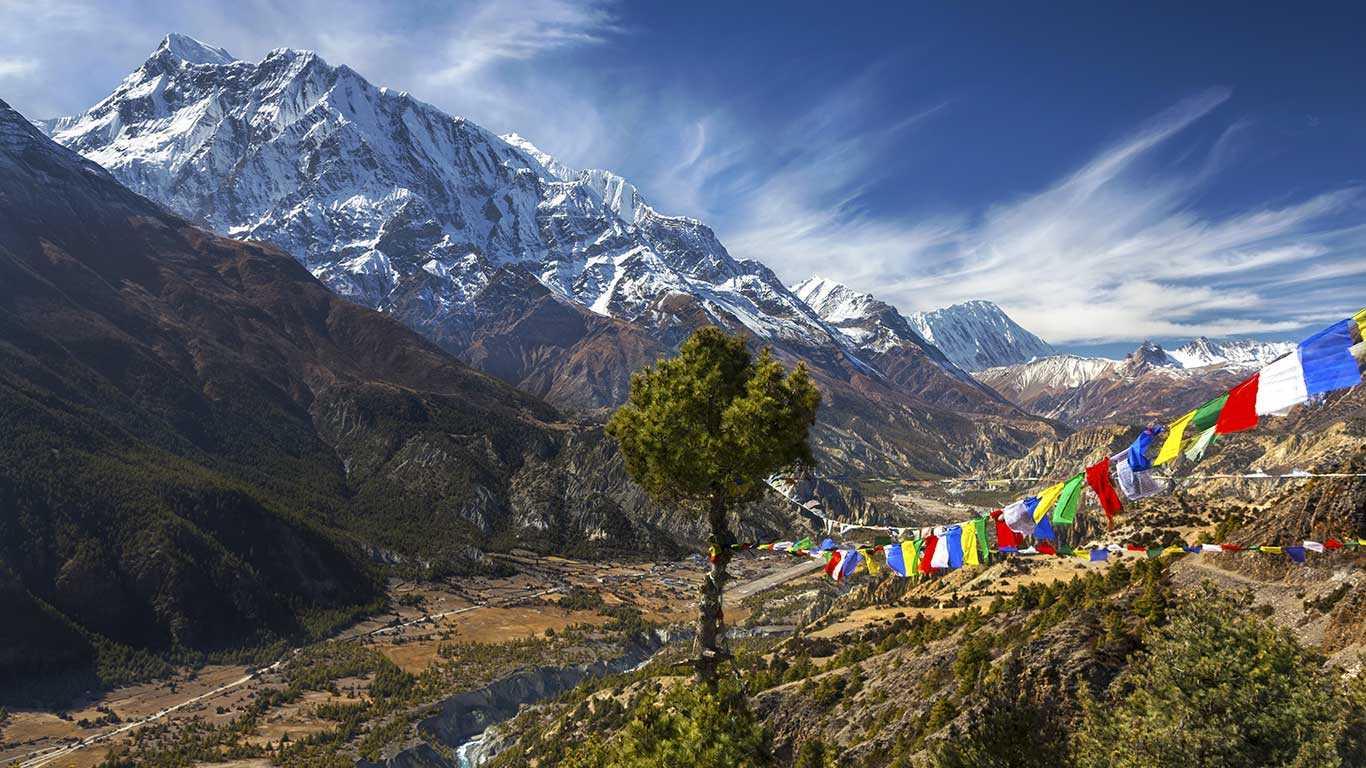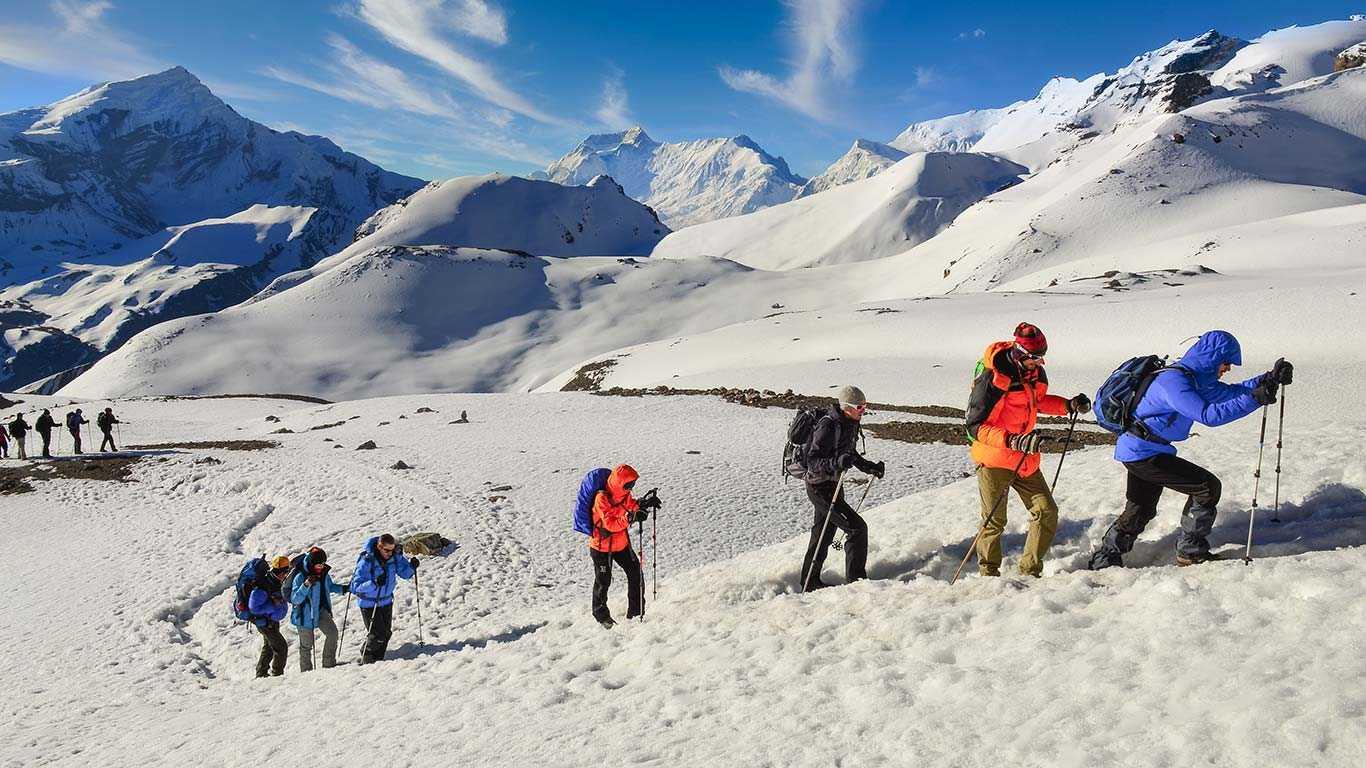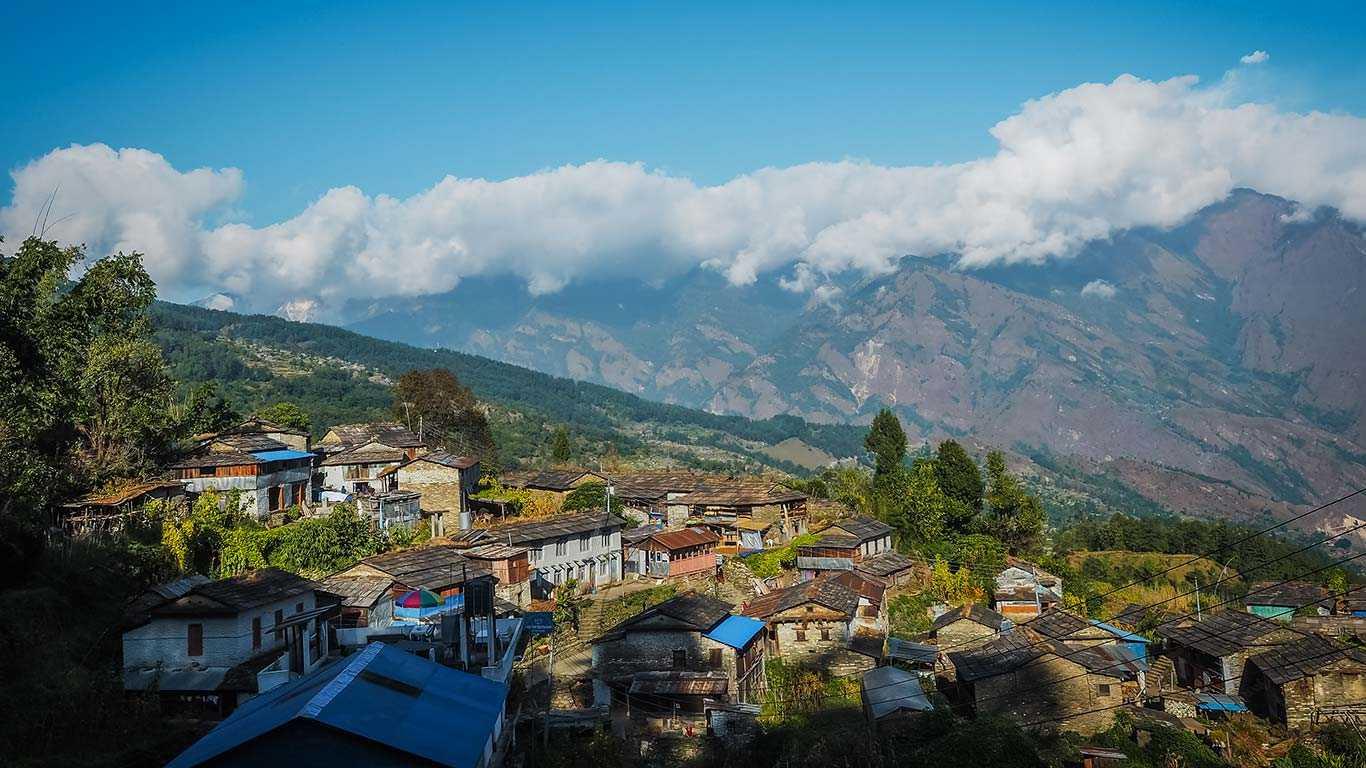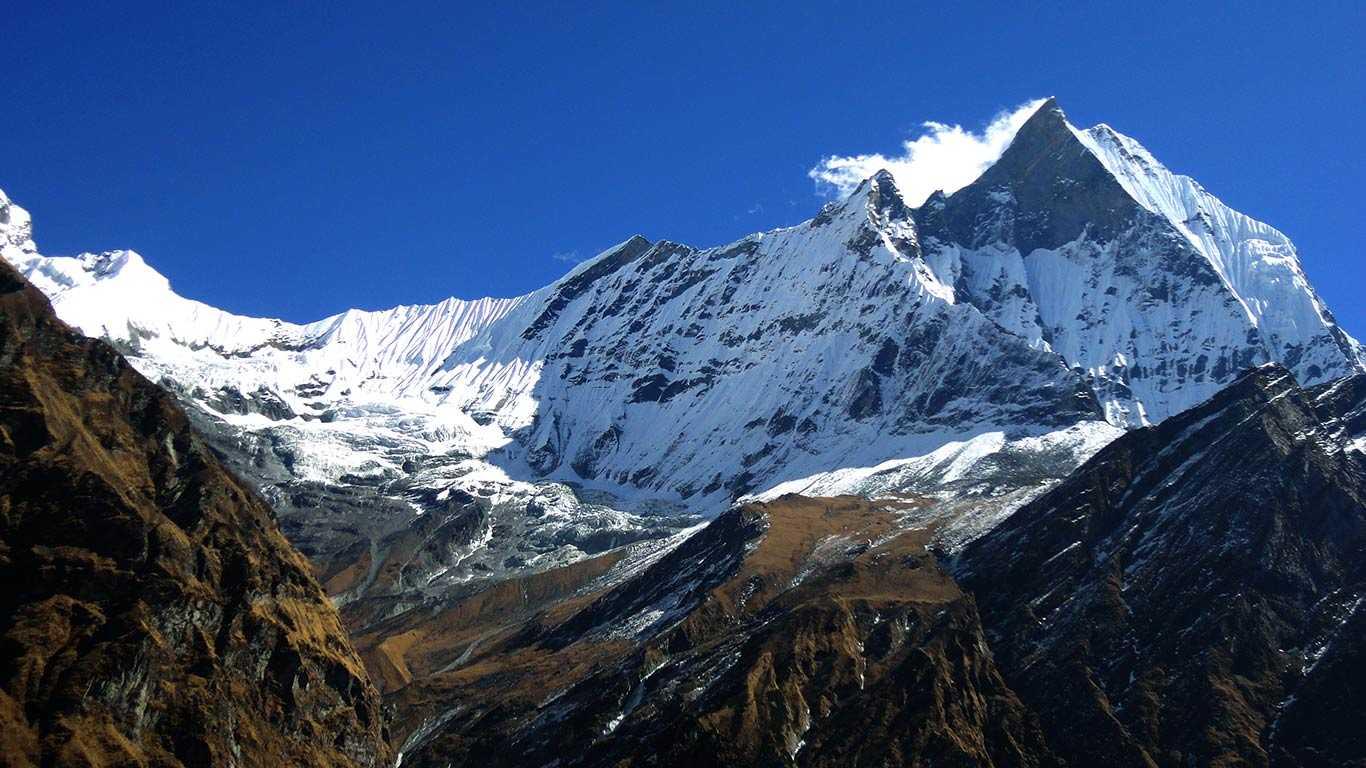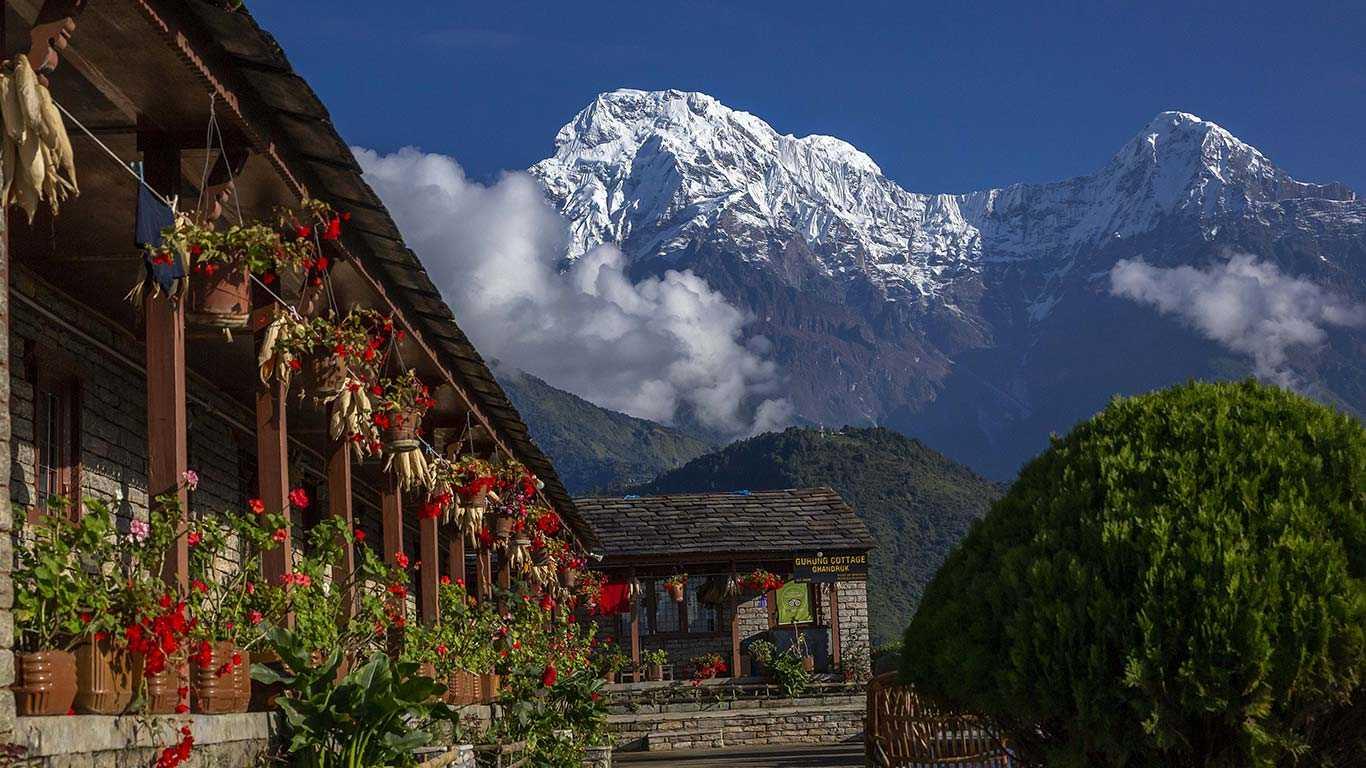
JOURNEY THROUGH DIVERSE LANDSCAPE
Annapurna region is a diversified landscape that offers an exceptional trekking experience to travelers. It is regarded as a heaven by trekkers of different levels because of the multiple kinds of wonders that can be seen throughout a single journey. Be it the Annapurna Circuit or the Annapurna Sanctuary Trek, it is a guarantee that anyone who travels through this region will have an unforgettable adventure.
The route takes travelers from friendly lowland villages to rhododendrons and oak forests, peaceful alpine valleys, and high mountains. Throughout the journey, you will pass through rice paddies, semi-dry deserts, sky caves, and mountain passes, experiencing the lifestyle of people living there.
The trekking trail goes around the Annapurna range, which allows travelers to enjoy outstanding views of the Lamjung Himal, Dhaulagiri, and Annapurna Ranges. Annapurna region offers natural diversity like no other region.


CULTURAL IMMERSION
A trip to the Annapurna region is not any normal trip; it is a journey encountering the diverse cultures of Nepal. Travelers are able to visit various cultural sites and heritage sites with ancient artifacts.
Living with locals in teahouses/homestays and immersing in the lifestyle, practices, and culture of various ethnicities like Gurung, Magar, Thakali, and so on is the highlight of this trek. Participating in their festivals could be another amazing experience. There is no doubt that the hospitality and cooperation provided while visiting the communities will be warm and intimate.
The Annapurna region is a spiritual sanctuary with must-visit shrines like The Braga Monastery, Muktinath Temple, Deurali Temple, Charang Monastery, and more. The journey into Annapurna is not just limited to an amazing trekking experience but also a spiritual awakening through the cultural heart of Nepal.
Annapurna Treks packages
If Everest is the crown of Nepal, then Annapurna is the heart of the Himalayas. Likewise, the Annapurna region is among the most sought-after trekking destinations. There is no doubt that this region is rich with scenic mountain views. But Annapurna is also known for its rich culture and diverse ecosystems.
Located in north-central Nepal, the Annapurna region is within Gandaki Province. It spans a wide range of elevations. It can be as low as 800 meters to well above 8,091 meters. Annapurna I is the world’s tenth-highest mountain. Similarly, it’s located at the latitude of 28.6136° N and longitude of 83.8736° E.
The Annapurna Region offers different rewards for different travelers. People looking for serene walks in the countryside can hike through the village. Trekkers looking for adventure can summit mountain peaks.
Why Trek in the Annapurna Region?
The Annapurna Region provides a rare combination. It offers natural diversity, cultural richness, and trekking accessibility. This makes the regions ideal for all trekkers.
Trekkers can journey through a wide range of landscapes in a short time. A traveler can see lush tropical forest and flower-filled alpine meadows. They face the barren, high-altitude deserts of the Annapurna region.
Trails in the Annapurna Region are well-established and marked. It offers peace of mind for solo trekkers. Likewise, it also eases navigation for a group expedition.
The Annapurna Region has a well-developed network of tea houses and lodges. You can find affordable accommodation and meals. It also provides a chance to interact with the local community.
The treks in the region are incredibly beginner-friendly. You can take short and scenic journeys. One can take a trek to Ghorepani Poon Hill or the Gandruk Loop.
Seasoned trekkers can take more challenging routes. Many go on the Annapurna Circuit and Tilicho Lake for a harder journey.
Travelers get a rich blend of culture in Annapurna. People of different ethnicities, Gurung, Magar, Thakali, and Tibetan-influenced communities, live in Annapurna.
Trekkers enjoy distinct traditions, architecture, and food in the Annapurna region.
The Annapurna region offers a bird’s-eye view of the mountains. It includes world-famous peaks like:
Annapurna South (7,219m),
The sacred Machapuchare (Fishtail, 6,993m),
Dhaulagiri (8,167m),
Nilgiri (7,061m).
These breathtaking mountains constantly change with altitude, season, and light. It offers photographers and nature lovers endless inspiration.
The Annapurna region is one of the must-visit destinations in Nepal. It has the most well-rounded and rewarding treks and journeys. Culture and community have a unique blend in this region.
How to reach the Annapurna Region?
Reaching the Annapurna region is rather simple. You either take a flight or you hit the road. Likewise, there are both benefits and demerits to the two. Taking a plane is the most common way, since it saves time. Likewise, a road trip isn’t a bad idea. The road offers scenes that a plane can never provide.
Option 1: Flight from Tribhuvan International Airport to Pokhara Airport
Step 1: Go to Tribhuvan International Airport (TIA), Kathmandu
Domestic flights to Pokhara depart from the domestic terminal.
Arrive early, as weather delays are common.
Note: Weather conditions cause flight delays. Particularly fog, rain, and strong winds.
Step 2: Book a domestic flight to Pokhara
Choose an airline that offers the best price. Airlines include Buddha Air, Yeti Airlines, and Saurya Airlines.
The flight from Kathmandu to Pokhara takes 25-30 minutes.
Step 3: Arrival at Pokhara Airport
You land at Pokhara Airport (Domestic) after flying for 25-30 minutes.
Taxi or pre-arranged transport will take you to your hotel or lodge.
Option 2: Road Trip from Kathmandu to Pokhara
Step 1: Begin your road journey from Kathmandu
There are multiple options to choose from:
Tourist buses (Departs daily from Thamel)
Private jeep hire
Local microbuses or shared vans
Step 2: Travel via the Prithvi Highway:
You start your journey in the early morning.
The road trip takes you along rivers and terraced hillsides.
The trip takes you 6-8 hours. It will depend on traffic and road conditions.
Step 3: Arrival in Pokhara
The tourist buses end their journey at the Pokhara Tourist Bus Park.
Hired jeeps will drop you off at your chosen hotel or guesthouse in Pokhara.
Local microbuses and shared vans drop you at Prithvi Chowk Bus Park.
Price Difference: Road Trip and Flight to Pokhara
A flight from Kathmandu to Pokhara reduces travel time but can be costly. Taking a plane to Pokhara costs $100 to $130 per ticket. But the comfort and speed are unmatched.
A tourist bus offers the most comfort among the options for road travel. The price can range from $20 to $25 per person. One of the key concerns is that it can get bumpy on the road.
On the other hand, hiring a private jeep can be expensive. But if you travel with a group, it’s the best option for a road trip. To rent a Jeep, it costs around $90 to $135. The most budget-friendly option is taking the local microbus. Its cost is $10 to $15 per person.
Note: Booking a trek with Pristine Himalayan Trekkers keeps away travel worries. Your journey catered to your liking.
Culture and community in the Annapurna Region
The Annapurna Region is a hot pot of culture. It is the home of many ethnic groups. But most of the people found in the region are:
Gurung
Thakali
Managi
Tibetan Buddhist Communities
Newaris
Magars
Each group contributes distinct languages, customs, traditional attire, and rituals. This adds depth to every trekking experience.
Everest has a predominantly Sherpa population living in its area. The Annapurna region brings you closer to the Gurung and Magar people at a lower elevation. You meet the Thakali and Tibetan-influenced communities in Upper Mustang and Manang.
You will experience their warm hospitality in every village you come across. Enjoy their deep-rooted traditions. But that’s not all! You will find lush subtropical forests near Pokhara. As you climb further, you get the arid rain-shadow deserts of Mustang. And even further up, you’ll see glaciers feeding the alpine lakes. The Annapurna region is a living textbook on geography.
Popular Trekking Packages in the Annapurna Region
Annapurna Royal Trek
It is among the shortest treks in the Annapurna Region. The journey is for eight days. The “Royal” part came after the then-Prince Charles of England. He and his 90 fellow members explored this route in 1981. Here’s what you can expect in the Annapurna Royal Trek:
Duration: 8 Days
Max Altitude: Syaglung 1,730 Meters
Coordinates: 28.2282° N, 83.7833° E
Difficulty: Beginner-Friendly Trekking
Trip Start: Kathmandu
Trip End: Kathmandu
Accommodation: Tea Houses & Hotels
Meals: Included in the package
Temperature: 15 °C Day / -10 °C Night
Group Size: 2-16
Best Season: Spring/Autumn/Winter
Singu Chuli Peak Climb
It's best known as the Flute Peak. Singu Chuli peak stands at over 6,000 meters. Likewise, it is one of the hardest climbs in the Annapurna region. And here are things to expect from the Singu Chuli peak climb:
Duration: 23 Days
Max Altitude: 6,501 Meters
Coordinates: 28.58722°N, 83.88306°E
Difficulty: Extreme Trek and Climb
Trip Start: Kathmandu
Trip End: Kathmandu
Accommodation: Tea Houses & Hotels
Meals: Included in the package
Temperature: 15 °C Day / -9 °C Night
Group Size: 2-16
Best Season: Spring/Autumn
Upper Mustang Trek
The Upper Mustang trek is a favorite for many trekkers. Likewise, the alternative Upper Mustang trek offers you a real off-the-beaten-path journey. Discover the hidden gems, Lo Manthang and the Walled Kingdom of Lo. So, look forward to:
Duration: 18 Days
Max Altitude: 4,000 Meters
Coordinates: 29.1800° N, 83.9624°
Difficulty: Moderate Trek
Trip Start: Kathmandu
Trip End: Kathmandu
Accommodation: Tea Houses & Hotels
Meals: Included in the package
Temperature: 17 °C Day / -8 °C Night
Group Size: 2-16
Best Season: Spring/Autumn
Annapurna Circuit Tour
The Annapurna Circuit trek is renowned worldwide. The trail takes you across the entire Annapurna massif. It includes the Thorong La Pass, Kaligandaki Gorge, and Muktinath. Things to look forward to:
Duration: 14 Days
Max Altitude: 5,416 Meters
Coordinates: 28.7934° N, 83.9387° E
Difficulty: Moderate Trek
Trip Start: Kathmandu
Trip End: Kathmandu
Accommodation: Tea Houses & Hotels
Meals: Included in the package
Temperature: 5 to 8 °C Day / -5 to -10 °C Night
Group Size: 2-16
Best Season: Spring/Autumn
Upper Mustang Motorbike Tour
The motorbike tour to Upper Mustang offers you relaxation and freedom. You ride a motorcycle through Upper Mustang on a thrilling adventure. If riding motorbikes is one of your passions, this package is for you. Here’s what you can expect from the Upper Mustang Motorbike Tour.
Duration: 14 Days
Max Altitude: 4,000 Meters
Coordinates: 29.1800° N, 83.9624° E
Difficulty: Moderate Traveling
Trip Start: Kathmandu
Trip End: Kathmandu
Accommodation: Tea Houses & Hotels
Meals: Included in the package
Motorbikes: Included in the package
Temperature: 10 °C to 25 °C Day / -6 °C to -2 °C Night
Group Size: 2-16
Best Season: Spring/Autumn
Mohare Danda Khopra Trek
Mohare Danda Khopra Trek is a one of the first travelers to walk along the newly opened trails. You’ll enjoy a breathtaking sunrise from Mohare and Khopra. Likewise, take in the mesmerizing view of Annapurna South and other peaks. What you should expect from the trek:
Duration: 14 Days
Max Altitude: 3,660 Meters
Coordinates: 28.371379° N, 83.6770823° E
Difficulty: Moderate Trekking
Trip Start: Kathmandu
Trip End: Kathmandu
Accommodation: Tea Houses & Hotels
Meals: Included in the package
Temperature: 10 °C to 30 °C Day / 3 °C to 5 °C Night
Group Size: 2-16
Best Season: Spring/Autumn
Annapurna Base Camp Trek
Annapurna Base Camp is among the most renowned treks in the region. Likewise, thousands of trekkers visit the base camp every year. It offers hypnotizing scenery and a diverse culture. And during the ABC trek, you can expect:
Duration: 14 Days
Max Altitude: 4,130 Meters
Coordinates: 28.5300° N, 83.8780° E
Difficulty: Moderate Trekking
Trip Start: Kathmandu
Trip End: Kathmandu
Accommodation: Tea Houses & Hotels
Meals: Included in the package
Temperature: 10 °C Day / -5 °C Night
Group Size: 2-32
Best Season: Spring/Autumn
Annapurna Base Camp Budget Trek
Like the normal package, this budget trek offers a journey to the ABC. However, some of the facilities will be removed. And here’s what you can expect from the Annapurna Base Camp budget Trek:
Duration: 9 Days
Max Altitude: 4,130 Meters
Coordinates: 28.5300° N, 83.8780° E
Difficulty: Moderate Trekking
Trip Start: Kathmandu
Trip End: Kathmandu
Accommodation: Tea Houses & Hotels
Meals: Breakfast is included with the Bedding. Lunch and dinner are not included in the package.
Temperature: 10 °C Day / -2 °C Night
Group Size: 2-32
Best Season: Spring/Autumn
Jomsom Muktinath Jeep Tour
Take a road trip to the sacred Jomsom Muktinath in a Jeep. You will be in a 4-wheel drive with good ground clearance and suspension. The package offers 3 nights of hotel accommodation in Kathmandu. And 2 nights of hotel accommodation in Pokhara. Both will be on a twin-sharing basis with the BB Plan. Here are other things offered in the package:
Duration: 10 Days
Max Altitude: Muktinath 3,800 Meters
Coordinates: 28.8017° N, 83.8579° E
Difficulty: Easy Traveling
Trip Start: Kathmandu
Trip End: Kathmandu
Accommodation: Tea Houses & Hotels
Meals: Breakfast, lunch, and Dinner
Temperature: 18 °C Day / -2 °C Night
Group Size: 2-8
Best Season: Spring/Autumn
Tilicho Peak Expedition - 35 Days
You can feel the accomplishment of climbing Tilicho Peak of 7,134 meters. After reaching the peak, you can enjoy a majestic view of other mountains in the region. You can challenge yourself as a climber. And here’s what you can expect from the expedition:
Duration: 35 Days
Max Altitude: 7,100 Meters
Coordinates: 28.8017° N, 83.8579° E
Difficulty: Extreme Treks and Climbing
Trip Start: Kathmandu
Trip End: Kathmandu
Accommodation: Lodges, Tents, & Hotels
Meals: Breakfast, lunch, and Dinner
Temperature: 20 °C Day / 10 °C Night Lower Areas
Temperature: 10 °C Day / -10 °C Night Higer Areas
Group Size: 2-15
Best Season: Spring/Autumn
Annapurna Base Camp Helicopter Tour
Enjoy two hours of scenic aerial views from Pokhara to Annapurna Base Camp. While trekking fills your wanderlust, the views from the air appear more freeing in a sense. Here’s what you get from our packaged helicopter tour of the Annapurna Base Camp:
Duration: 1 Day
Max Altitude: 4,130 Meters
Coordinates: 28.5300° N, 83.8780° E
Difficulty: Easy Traveling
Trip Start: Kathmandu
Trip End: Kathmandu
Accommodation: Lodges, Tents, & Hotels
Meals: Breakfast, lunch, and Dinner
Temperature: 20 °C Day / 10 °C Night Lower Areas
Temperature: 10 °C Day / -10 °C Night Higer Areas
Group Size: 2-15
Best Season: Spring/Autumn
Mardi Himal Short Trek
In this package, you start your journey in Pokhara for the Mardi Himal short trek. You will have an overnight stay at Pitam Deurali. In the following days, you will climb to the low camp and the Mardi high camp. Finally, you will trek to the base camp. Here’s a list of things to expect in this journey:
Duration: 6 days
Max Altitude: Mardi Himal Base Camp at 4,500 Meters
Coordinates: 28.464286° N, 83.901681° E
Difficulty: Beginner-Friendly Trekking
Trip Start: Kathmandu
Trip End: Kathmandu
Accommodation: Lodges, Tents, & Hotels
Meals: Breakfast, lunch, and Dinner
Temperature: 20 °C Day / 10 °C Night Lower Areas
Temperature: 5 °C Day / -10 °C Night Higer Areas
Group Size: 2-15
Best Season: Spring/Autumn
Difficulty Levels in the Annapurna Region
We have over 40 packages in the Annapurna region. Likewise, the difficulty level varies from beginner-friendly to extreme climbs in this region. As such, the Annapurna region is a superb choice for trekkers of any level.
Beginner-Friendly Treks:
If you are a beginner-level trekker, a beginner-friendly trek is the answer. Now, it’s not just for novice trekkers. Even seasoned mountaineers can join in for a relaxing trek. Here are some of the options for beginner-friendly trips with us:
Poon Hill Short Trek: A 4-day trek with a max altitude of 3,210 meters.
Annapurna Short Trek Dhampus & Pothana: 7-Day trek and a max elevation of 1,900 meters.
Annapurna Royal Trek: An eight-day trek with a max altitude of 1,730 meters.
Annapurna Base Camp 8 Days Trek: Max altitude of 4,130 meters.
Moderate Treks in the Annapurna Region:
Trekkers with a few years of experience can take on moderate treks. All they need is decent fitness. Likewise, it sees a slightly higher elevation than beginner-friendly trips. Also, it lasts a bit longer than most level-one treks. Here are some options for you to choose from:
Ghorepani Poonhill Budget Trek: 7-day trek and a max altitude of 3,210 meters.
Australian Base Camp Trek: 8-day trek with a max elevation of 1,880 meters.
Mardi Himal Budget Trek: 9-day trek with a max elevation of 5,587 meters.
Mohare Danda Khopra Trek: A 14-day trek. It has a max altitude of 3,660 meters.
Intermediate Treks You Can Do in The Annapurna Region:
In an intermediate trek, you face higher elevations and longer durations. Likewise, the physical effort becomes more demanding. It is suitable for experienced and fit mountaineers. Some of the challenging trips we have are:
Khayar Lake Khopra Danda Trek: 14-day trek and a max elevation of 4,665 meters.
Annapurna Circuit Tour: 14-day tour and a max altitude of 5,416 meters.
Upper Mustang Alternative Trek: 18-day trek that reaches a max altitude of 4,000 meters.
Nar Phu to Upper Mustang Trek via Teri-La Pass: 25-day trek with max elevation of 5,595 meters.
Hard Trek in the Annapurna Region:
It offers trekkers a challenging journey. Likewise, these hard treks have high passes, tough terrains, and altitude risks. Trekkers with years of experience can take on this level. Some of the options for hard treks are:
Dhampus Peak Climb: A 19-day climb with a max elevation of 6,000 meters.
Thorong La Pass Trek: 21-day trek with a max elevation of 5,416 meters.
Tukuche Peak Expedition: A 26-day expedition. It has a max altitude of 6,920 meters.
Himlung Expedition : 28-day expedition and a max altitude of 7,126 meters.
Extreme Climbs in the Annapurna Region:
It is for high-altitude mountaineering. A climber needs technical skills and knowledge for such treks. Only seasoned and veteran mountaineers can do it safely. Here are some of the extreme treks:
Singu Chuli Peak Climb: A 21-day journey has a max altitude of 6,501 meters.
Saribung Peak Climbing: A 24-day climb with a max elevation of 6,328 meters.
Tilicho Peak Expedition: A 35-day expedition and a max elevation of 7,100 meters.
Best Time to Be in the Annapurna Region: Seasons and Temperatures
The Annapurna region welcomes trekkers in all seasons. However, only a few bring out true beauty in the area. In the peak season, a trekker can witness rhododendron bloom. They can watch the mountains in the Annapurna region with crystal clarity. To make your journey memorable, pick the right time to visit.
Spring is between March and May
March heralds the start of spring in the Annapurna region. Similarly, May marks its end in the area. Spring brings clear skies, mild temperatures, and the rhododendron in the forest.
Routes through Ghorepani and Khopra Danda offer blooming and lush greenery. And the visibility of peaks, Annapurna I, Machapuchare, and Dhaulagiri is crystal clear.
Temperatures in Ghandruk and Ghorepani hover around 15–20°C (59–68°F). Higher altitudes experience 5–10°C during the day. At night, it can drop to minus 5°C during Springtime.
September to November: Autumn
The second peak trekking season in the Annapurna region is autumn. Stable weather, crisp air, and clear views of the peaks. The trails are dry and busy with fellow trekkers. Additionally, two major festivals fall in autumn.
Lower areas have similar temperatures to Spring. Ghorepani expects a mild 10–18°C at daytime. Similarly, at night it can drop to -5°C to 5°C. Also, at higher elevations, the temperatures are around 5°C (41°F). At night, it plummets to -5 to -10°C (23 to 14°F).
June to August: Summer and Monsoon
Most high-altitude trekking destinations are closed during the monsoon. The rain makes the landscape lush with greenery. It also makes the trail muddy, slippery, and prone to landslides. Lower Mustang and Upper Mustang are better trekking options during the summer/monsoon.
Pokhara and the lower altitude areas remain warm. It’s typically 18°C to 28°C (64°F to 82°F). But at higher elevations, it drops to 9°C to 20°C (48°F to 68°F). During the night, the lower areas experience 10°C to 14°C (50°F to 57°F). At higher altitudes, the temperature at night can drop below freezing.
Winter: December to February
The higher altitudes in the Annapurna region remain covered in snow during winter. Most passes above certain elevations remain closed. Lower treks in the Annapurna region remain open. The trails become less crowded, and the peaks with a snow blanket become breathtaking.
Pokhara remains warm and snuggly during the winter. The temperature hovers between 9°C and 12°C during the day and 3°C-5°C during the night. At higher altitudes, it can drop to well over -24 °C at night and -14°C during daytime.
Accommodation and Food in the Annapurna Region
It is among the most popular trails. As such, the Annapurna region has the most teahouses and lodges. A hot meal and a warm bed are never too far away in this region. The accommodations in Annapurna are among the most developed, given the booming tourism.
Foods and beverages come in vast varieties. You can order ginger tea or feast on a home-cooked Thakali meal. From western cuisine to an authentic Himalayan meal, travelers can enjoy.
Accommodation and Facilities in the Annapurna Region
Teahouses – Your Himalayan Home Away from Home
The lifeline of the Annapurna region is these teahouses. They can be found in almost every village in the area. Most are family-run lodges offering comfortable rooms. Teahouses mostly have twin beds and shared bathrooms.
What they lack in luxury, they make up for with hospitality and warmth. Dining halls are the heart of these homes. It’s the place where trekkers gather for heat from yak-dung stoves. Teahouses are among the most common and affordable.
Homestays – A True Cultural Experience
Homestays can be found in many villages in the Annapurna region. It offers a traveler a personal touch with their hosts. Trekkers share the roof with a local family. But unlike teahouses, you won’t find a menu for the meal. You help prepare the food during your stay.
These accommodations provide the bare basic sleeping services. The mattress won’t be thick, and the bedding will most likely be on the floor. But the warmth of the host family keeps you cozy. Homestays are the most affordable accommodation.
Hotels – Urban Stops in the Trek
Hotels aren’t as common in the more remote places. However, many villages in the Annapurna region have a hotel or two. Moreover, they offer private rooms, services, and a wide range of meals.
These places also have wider amenities than the former places. They offer hot showers, charging ports, thicker bedding, and even Wi-Fi. Hotels are great for recharge and recoup, but they are more expensive.
Lodges – Comfort at Altitude
Lodges offer the best comfort among the options. However, they aren’t common in most places. They are found in hubs like Ghorepani, Chhomrong, Manang, and Jomsom. These lodges offer private rooms with an attached bathroom.
These places also offer hot showers, a charging station, a thicker mattress, and internet. They are the perfect place for luxury on the trail. However, these luxury lodges are expensive, more expensive than hotels.
Foods That Are Only Found in the Annapurna Region
Unique Foods – Local Dishes to Fuel Your Trek
Find food that isn’t just for sustenance in the Annapurna Region. It’s part of your adventure in the Himalayas. Here’s a list of standout local specialties that are a must-have:
Thakali Khana Set –
Arguably the best dal bhat in Nepal. It comes with rice, lentils, greens, gundruk achar (fermented greens pickle), and pickles. It is often served with a side of yak or mutton curry.
Buckwheat Roti & Millet Flatbreads –
Dense, hearty breads that give lasting energy for high-altitude hikes. Popular in Upper Mustang and Manang.
Chhurpi Soup –
A body-warming soup made from dried yak cheese, popular in cold, high-altitude villages.
Tsampa (Roasted Barley Flour) –
A traditional Tibetan breakfast dish, filling and great for acclimatization days.
Unique Drinks – Local Sips to Try Along the Way
After a day’s climb, settle in with a drink that’s as memorable as the views:
Marpha Apple Brandy – Distilled in the charming village of Marpha using local apples. Smooth, sweet, and surprisingly strong.
Tongba – A fermented millet drink served in a large wooden mug and drunk through a bamboo straw. Add hot water and keep sipping!
Butter Tea (Po Cha) – Salty, creamy, and warm. It's an acquired taste, but a staple among Himalayan communities.
The Annapurna region feeds both the soul and the body. You can enjoy a hot apple pie in the lodges. Or you can enjoy Tonga with the locals, sharing stories. Get a taste of the Himalayas in your next visit to the Annapurna region.
What Permits Are Required for Trekking in the Annapurna Region?
So, you decided to go to the Annapurna region. You want to trek to some of the best trails it has to offer. But before you do that, let’s see if you have everything you need.
And yes, there are many permits required for trekking there. But don’t worry, we have got you covered. Here are the papers and permits you need:
TIMS Card (Trekkers’ Information Management System)
Purpose:
It helps authorities keep track of trekkers. It’s mostly used for safety purposes and rescue if needed.
Cost:
NPR 2,000 for foreign individual trekkers (FITs)
NPR 1,000 Trekking Agencies
NPR 600 for FIT SAARC countries
NPR 300 for Trekking Agencies with SAARC countries
Where to Get it:
Nepal Tourism Board (NTB), Kathmandu or Pokhara
Trekking Agencies’ Association of Nepal (TAAN) Offices
ACAP Permit (Annapurna Conservation Area Permit)
Purpose:
The conservation fee is used to maintain the trails. Protect the biodiversity and local infrastructure in the Annapurna Conservation Area.
Cost:
NRP 3,000 for foreign Nationals (approximately $25)
NRP 1,000 for SAARC Nationals (estimated $8)
Free for children under 10 years
Online Payment Gateway Charge: 2.9% Extra
Where to Get it:
Nepal Tourism Board (NTB), Kathmandu or Pokhara
Trekking Agencies’ Association of Nepal (TAAN) Offices
Restricted Area Permit (for Upper Mustang only)
Purpose:
Control the tourism flow in the sensitive border, near Tibet.
Required if:
You need a Restricted Area Permit if you intend to go beyond Kagbeni. The permit is to enter Upper Mustang.
Cost:
$500 per person for the first 10 days.
$50 per person per day for beyond those 10 days.
Where to Get it:
It can only be obtained through a government-registered trekking agency.
Solo Trekking is not permitted in Upper Mustang.
You must trek with a licensed guide.






